





From Groupie Freaks to Tumblr Geeks | 18 The Future Is Funky: A History of Afrofuturism in Music | 20 The Revival of Pop Music | 43 Local Talent: Maddox | 10 Emo’s Back from the (un)Dead | 19 Death of Concert Etiquette | 32 N o 70 Fall 2022
E-Board
President
Angela Lin
Editor-in-Chief
Chelsea Henderson
Art Directors
Jenny Chen
Megan Lam
Design Coordinator
Sydney Tomasello
Promotions Director
Sofia Maricevic
Promotions Director
In-Training
Emily Greenberg
Photo Directors
Emily Gringorten
Kimmy Curry
Features Editor
Ethan Matthews
Reviews Editors
Henry Bova
Ananya Chaudhari
Interviews Editor
Desmond LaFave
Social Media Directors
Hannah Lowicki
Matthew Rose
Alexa Rand
Events Coordinator

Roshni Subramonian
Treasurer
Michael DeVine
Staff Staff Writers
Jessica Gwardschaladse
Chelsea Henderson
Lacie Foreht
Desmond LaFave
Ethan Matthews
Michael Hirinda
Terrance Dumoulin
Alex Sumas
Sarah Lamodi
Lucas Cooperman
Katherine Miner
Henry Bova
Jacob Kemp
Dakota Castro Jarrett
Julia Towne
Alexandra Fu
Lillian Elwood
Jonathan Shia
Ahaan Chaudhuri
Victoria Li
Karl Adrianza
Ananya Chaudhuri
Trevor Gardemal
Sophia Haydon-Khan
Olivia Leon
Justin Guthrie
Keene Munoz Quiros
Bryana Dawkins
Jonah Seidenfeld
Cameron Alsop
Ev Ogier
Ashley Hart
Luke Colombo
Juliana George
Aki Gaythwaite
Wyatt DuPont
Rilyn Szabo
Laurel Booth
Connor Britson
Rachel Cerato
Art & Design
Alia Ziae-Mohseni
Camille Wimpe
Catherine Terkildsen
Emlyn Griffths
Haidyn Redmond
Laura Mattingly
Maia Fernandez-Baigun
Nichcolas Alonzo
Sarah Liu
Xin Li
Ava Ackerman
Dewi Kalis
Juliana LaPara
Leena Gupta
Laurel Booth
Promotions
Alexa Rand
Anna Chalnick
Anya Gupta
Ari Kantorowitz
Bella Ramdayal
Connor Choptij
Emily Greenberg
Gabby Rinaldi
Genevieve Kopp
Hannah Lowicki
Luke Colombo
Marin Childers
Mason Wight
Matthew Rose
Mica Kahn
Michael DeVine
Ro Subramonian
Sofia Kolobaev
Sofia Maricevic
Sofie Wendell
Sydney Tomasello
Trevor Gardemal
Photography
Genevieve Kopp
Alder Whiteford
Michael Ault
Matthew Rose
Lauren Violette
Max Rizzuto
Eliana Gilman
Krista Brochu
Maya Solanki
Vanessa Chalabi
Mia Rapella
Samantha Zagha
Seha Khan
Claire Adner
Ashley Hart
Mackinley Morgan
Sophie Quisenberry
Hannah Bocian
Anna Kelly
Sophia Seremetis
Cayla Hoang
Sebastian Wicke
Cali Cardenas
Brinda Dhawan
Mukki Gill
Charlotte Hysen
Kelly Thomas
Ashlynn Braisted
Emma Lawson
Emily Kobren
Angela Lin
Emily Zakrzewski
Risa Tapanes
Emily Greenberg
Sammie Cirillo
Coby Sugars
Taliyah Fox
Helen Cai
Nicholas Alonzo
Muhammad Elarbi
Amanda Stark
Emily Gringorten
Faith Nguyen
Kimmy Curry
Julia Finocchiaro
Get Involved
to become a Tastemaker? Click on tastemakersmag.com Snapped some awesome photos at a concert? Email them to tastemakersphoto@gmail.com Heard an album that really got you thinking? Send a review to tmreviews@gmail.com Get More Can’t get enough? Check out more original content on tastemakersmag.com Become a fan on Facebook at facebook.com/ tastemakersmag Follow us on Instagram: @tastemakersmag Follow us on Twitter at twitter.com/tastemakersmag Tastemakers Music Magazine 232 Curry Student Center 360 Huntington Ave. Boston, MA 02115 tastemakersmag@gmail.com get involved
Want
Meet the Staff About Listening to Quote

Sofie Wendell

Position Promotions
Major Spanish and International Affairs
Graduating Spring 2025
Favorite Venue Brighton Music Hall, Boston
Tastemaker Since Fall 2022
Juliana LaPara
Position Design
Major Design
Graduating Fall 2026
Favorite Venue Terminal 5, NY
Tastemaker Since Fall 2022
Rachel Cerato
Position Content
Major International Affairs and Environmental Studies
Graduating Spring 2023
Favorite Venue MGM Music Hall, Boston
Tastemaker Since Fall 2019

Sophie Quisenberry
Position Photo
Major Journalism
Graduating Spring 2025
Favorite Venue Middle East, Boston
Tastemaker Since Fall 2022
Julia Jacklin “Pressure to Party”
Aminé “RATCHET SATURN GIRL”
Omar Apollo “Petrified”
“It was a Rocky Week, get home ASAP, A$AP!”
Bjork “Venus as a Boy”
Inga Copeland
“Advice to Young Girls”
A$AP Mob Cozy Tapes Vol.2
“Women have served all these centuries as looking-glasses possessing the magic and delicious power of reflecting the figure of man at twice its natural size. Without that power probably the earth would still be swamp and jungle.” - Virginia Woolf
Noah Kahan “New Perspective”
Mt. Joy “Roly Poly”
Spacey Jane Here Comes Everybody
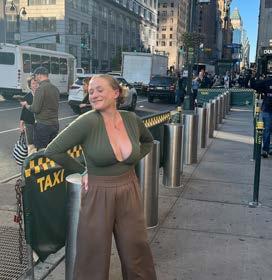
Lorna Shore Pain Remains
Ghost Infestissumam
Bauhaus In the Flat Field
“it’s not a phase, mom”
“Approaching my ‘washed up’ era.”
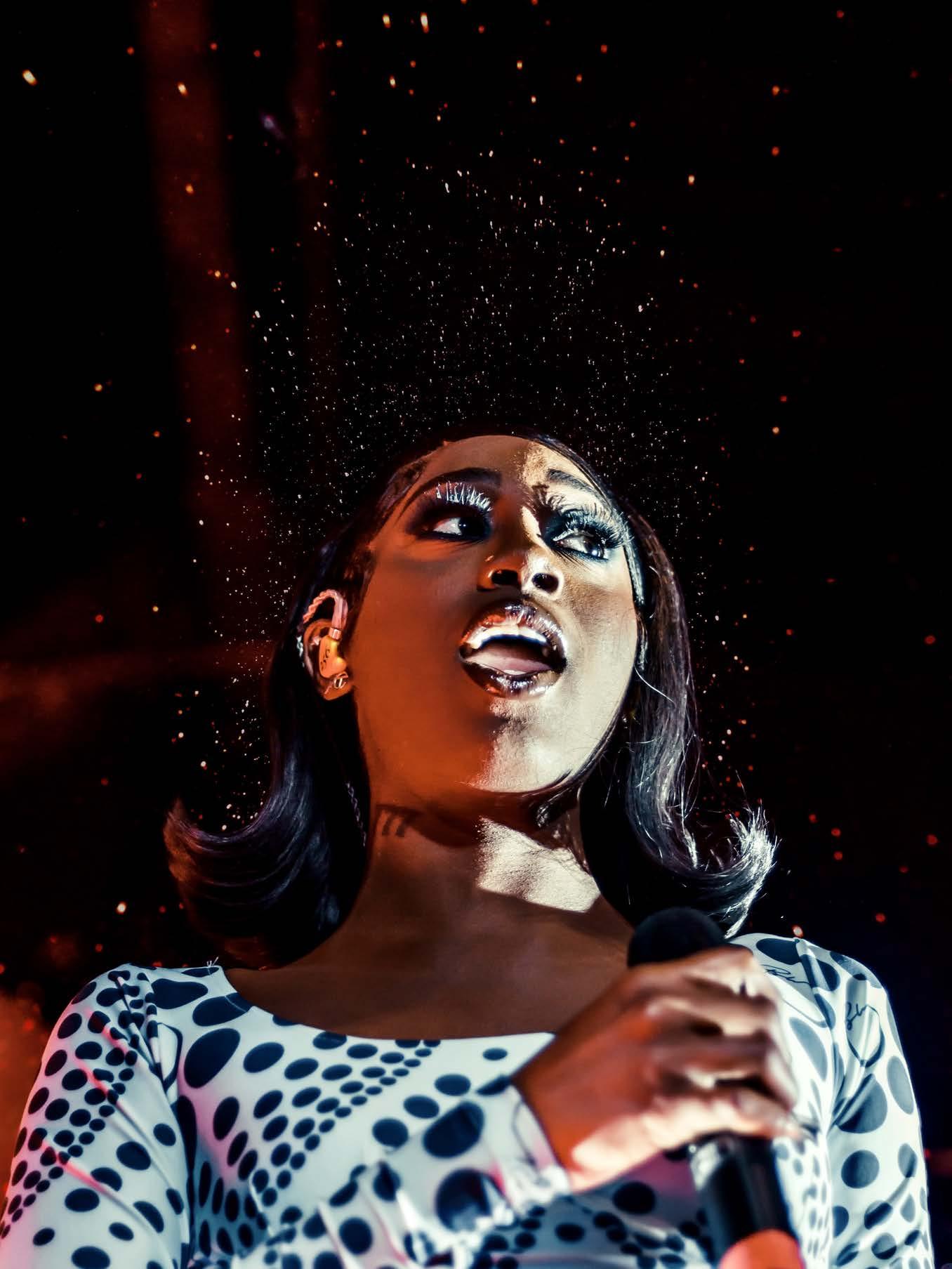 Flo Milli, Brighton Music Hall
Photo by Taliyah Fox (Game Art and Animation)
Flo Milli, Brighton Music Hall
Photo by Taliyah Fox (Game Art and Animation)
Cover Story
Boston’s Hardcore Scene and Its Legacy
As one of the nation’s oldest cities, the hardcore punk scene in Boston allowed a cathartic release for a city in turmoil and was the birthplace of some of the most influential bands in heavy music.
Editorials
New Songs, Old Albums: Defining Musical Legacies on Stage
The beauty of live shows truly lies in artists’ adapting their music for the stage, and you never really know what you’re going to get until the artist takes the spotlight.
Swingin’ Safari: A Roadtrip Through African Music
Staff Writer Keene Munoz Quiros takes us on a voyage exploring the spectacular diversity of African music.
Emo’s
Back from the (un)Dead
My Chemical Romance’s breakup in 2013 signaled an end of an era, but their recent releases and 2022 reunion tour signal a reignition of classic emo music.
The Grim Rise of the Pop Cinematic Experience
The seductive pop album rollout and sensational worldbuilding of contemporary music often has darker undertones that hurt both artist and consumer.
NPR’s
Tiny Desk Concerts: Finding Joy in Small Spaces
Take a look at some of the most notable performances in Bob Boilen’s iconic Tiny Desk Concert series.
Death of Concert Etiquette
A post-2020 live music world hosts some of the worst concertgoer behavior ever seen, ranging from uncomfortable at best to downright horrific and deadly at worst.
Spotify Warped: Gaming the Ratings
The all-too-familiar Spotify marketing campaign may have a broader impact on our listening habits and the industry at large than we realize.
The Feasibility of Live Music: Who Can Tour in 2022
Iconic psychedelic pop band Animal Collective recently had to cancel their new album tour for economic reasons, which begs the question: does touring benefit any artist in the year 2022?
Riot Grrrl: A History and Revival
While fading in popularity since its 1990s origins, the lasting influence of the feminist punk genre on the way the music industry treats woman has not.
Interviews Etcetera
Local Talent: Maddox
Tastemakers recently sat down for a chat with the Northeastern student musician about the ukulele, Lizzy McAlpine, and changing people’s minds.
9
In Defense Of: Kreayshawn
Easily dismissible as yet another trashy early 2010s party girl, the commercial failure of Kreayshawn’s provocative pop and hip hop music may have had more to do with industry turmoil than her own artistry.
18 22 36
Taste of Nostalgia: Give Up by The Postal Service
Tastemakers takes a retrospective look at a 2000s indie rock gem.
PJ Harvey Discography
Delve deeper into the eclectic discography of one of Britain’s most critically acclaimed musicians.
Underrated Artists: Issy Wood
Staff writer Juliana George argues why Issy Wood, a British visual artist turned indie pop singer, is an underappreciated act.
26 Reviews Show Reviews Mt. Joy, The 1975 Album Reviews Taylor Swift, Alvvays, The Backseat Lovers, Tove Lo 42 45 Table of Contents
Features
12
28
19
10
16 30 32 37 38 40
BabyTron
January 18 and 19 @ The Sinclair
Detroit rapper Babytron is performing a double header at The Sinclair on January 18th and 19th. The scam rap artist will certainly not scam you out of a good time. Be sure to check out the latet installment in his Bin Reaper series, Bin Reaper 3: Old Testament!
February 8 @ MGM Music Hall
Gone are the days that Vance Joy is exclusively for ukulele-playing middle schoolers. This February, Joy is swinging by MGM Music Hall to promote his 2022 album In Our Own Sweet Time. We all know you had “Riptide” on your playlist at one point or another, don’t pass up the opportunity to see it live!
Su Sa
Rockommend
Calendar January 1 2 3 4 5 6 7 8 9 10 11 12 13 A Band of Killer The Sinclair 14 15 16 17 18 Babytron The Sinclair 19 Babytron The Sinclair 20 21 Almost Queen Cabot Theatre 22 Trippie Redd Tsongas Center 23 24 25 26 27 28 29 Suki Waterhouse Paradise Rock Club 30 31 Mo Tu We Th Fr
Hannah Lowicki (Marketing)
Vance Joy
Sofie Wendell (Spanish and International Affairs)
If you wanna have a “Fit N Full” time on February 10th, make sure to not miss Samia playing at the House of Blues! The alternative/indie singersongwriter will hit the stage along with Tommy Lefroy as a part of her Honey Winter 2023 Tour to promote her upcoming album, Honey. Be sure to “Show Up” !!
Alexa Rand (Music Industry)
dvsn
February 17 @ House of Blues
Canadian duo, dvsn, is going on their first tour in almost 5 years. If you love smooth R&B, then you’ll surely want to hear Daniel Daley’s powerful vocals live over Nineteen85’s production. Catch dvsn at House of Blues on February 17.
February 1 2 3 4 5 6 7 8 Vance Joy MGM Music Hall 9 Maggie Rogers Roadrunner 10 Samia House of Blues Fitz And The Tantrums Big Night Live 11 Maggie Rogers Roadrunner 12 13 14 Julia Wolf Brighton Music Hall 15 16 17 Kimbra Big Night Live Carrie Underwood TD Garden dvsn House of Blues 18 Viagra Boys Royale 19 20 YG MGM Music Hall 21 22 23 A
Hoodie MGM Music Hall 24 Elle
Roadrunner 25 Cory
House of Blues 26
The
Su
Tu We
Boogie Wit Da
King
Wong
27 The Beths The Sinclair 28
Beths The Sinclair
Sa Mo
Th Fr
Samia
February 10 @ House of Blues
Sofia Maricevic (Finance and Accounting)
 The Beaches, Brighton Music Hall
Photo by Mukki Gill (Mechanical Engineering and History)
The Beaches, Brighton Music Hall
Photo by Mukki Gill (Mechanical Engineering and History)
It’s pretty easy to dismiss Kreayshawn as yet another trashy, talentless early 2010s party girl. The utter weirdness of her presence in rap in the early 2010s was nearly unprecedented, and she quickly became one of the most influential new acts in 2011, but she soon disappeared almost as quickly as she appeared. The widely held contempt for Kreayshawn’s artistry runs deep, but her rapid descent from the spotlight may have more to do with toxic industry pressures than her work itself.

Kreayshawn first gained notoriety in 2010 as part of the rap group White Girl Mob alongside friends V-Nasty and Lil Debbie. Rife with disputes, the trio disbanded in 2012, but not before Kreayshawn already saw massive success with her 2011 solo single “Gucci Gucci.” The accompanying music video garnered millions of views on initial release to critical acclaim, debuting at No. 57 in the US. Her unabridged weirdness through her idiosyncratic rapping, quirky videographic sensibilities, and overall unapologetic swagger catapulted her into the public eye as an unconventional star. She even hosted the red carpet for MTV’s Video Music Awards and was nominated for categories alongside acts like Tyler, The Creator and Eminem, in addition to directing a Red Hot Chili Peppers music video.
Which begs the question — what happened to the once monumental force? Has anyone since circa 2013 even heard of her? The resounding answer is no, and is often attributed to the colossal commercial failure of her debut album, 2012’s Somethin’ Bout Kreay. While containing “Gucci Gucci” and similarly viral single “Go Hard (La.La.La),” the rest of the record failed to reach the same levels of disruption she initially delivered. Frequently credited to a perceived flatness of production and vapidity of lyrics, Somethin’ Bout Kreay’s underperformance really seems to have more to do with label disputes and industry troubles than the substance of her artistry.
Following the success of “Gucci Gucci,” conflicts with Columbia Records — whom she signed a $1 million record deal with immediately after the single — halted the release of the record and subsequent singles, preventing the single’s momentum from carrying over into a debut. The eventually released record features acts like Kid Cudi, the legendary 2 Chainz, and even Diplo, and includes influences as varied as contemporary dance pop and 90s hip-hop. Most tracks offer similar levels of perfunctory swag as “Gucci Gucci,” but in comparison to the effortlessness with which her “Gucci Gucci, Louis Louis, Fendi Fendi, Prada / Them basic bitches wear that shit, so I don’t even bother” chants captivated young millennials, other tracks inevitably
paled. Criticism is often levied at how lost Kreayshawn’s voice becomes within her production, but the disjointed nature of her compositions is kind of the whole point — typical arrangements wouldn’t really suit an artist with lyrics like “I’m Lorena Bobbit chillin’ in your bed / I’m Britney Spears off hella drugs / And I just shaved my head,” as in “Left Ey3.” And there’s something to be said for someone capable of pushing an artist as prolific as Diplo as far out of his comfort zone as what certainly happened in the absurdity of “Twerkin!!!”
Was the campiness of Somethin’ Bout Kreay just underappreciated in its time? It’s impossible to tell if the album would’ve been more successful if released in 2022, but the intentional kitsch and nonsense in tracks like “K234YS0NIXZ” (pronounced “Kreaysonics”) and “Ch00k Ch00k Tare” would potentially fit in more with the contemporary hyperpop-adjacent zeitgeist than it did in 2010s rap. She has even seem somewhat of a resurgence in this arena, co-headlining queer nightlife shows alongside acts like Uffie, Petal Supply, and DAGR, and was featured in Coco & Clair Clair’s 2020 single “TLG.” Nonetheless, her follow-up releases, from 2017’s Kitty’s N Choppas to World’s Biggest Idiot in 2021, have unfortunately failed to proliferate her unique eccentricity that once threatened much of mainstream rap. Kreayshawn’s commercial failure as a rapper may be due more to these unfortunate circumstances than her artistic merit. As a certified weirdo, maybe industry demands and post”Gucci Gucci” capitalist pressure took the spark out of such a charismatic figure; Columbia dropping her from the label following a 2013 pregnancy – resulting in a $800k debt that has undoubtedly hindered her creative ambitions – certainly did not help. Nonetheless, Somethin’ Bout Kreay, and the Kreayshawn’s persona, live on in infamy as one of the most original characters to breach the rap world.
• Ethan Matthews (Architecture)
Designer: Sarah Liu (Journalism)
9
Designer: Sarah Liu (Journalism)
Local Talent
MADDOX MADDOX
Coming off the October release of his debut album, MEDIA, Maddox is a rising star in the Boston music scene. The Northeastern sophomore channels his thoughts and emotions into his R&B-influenced sound, highlighting his strong songwriting skills.
Tastemakers recently sat down with Maddox to talk about his musical background, the meaning behind MEDIA, and more.
This interview has been edited for brevity and clarity.
Tastemakers Magazine (TMM): What is your background in music?
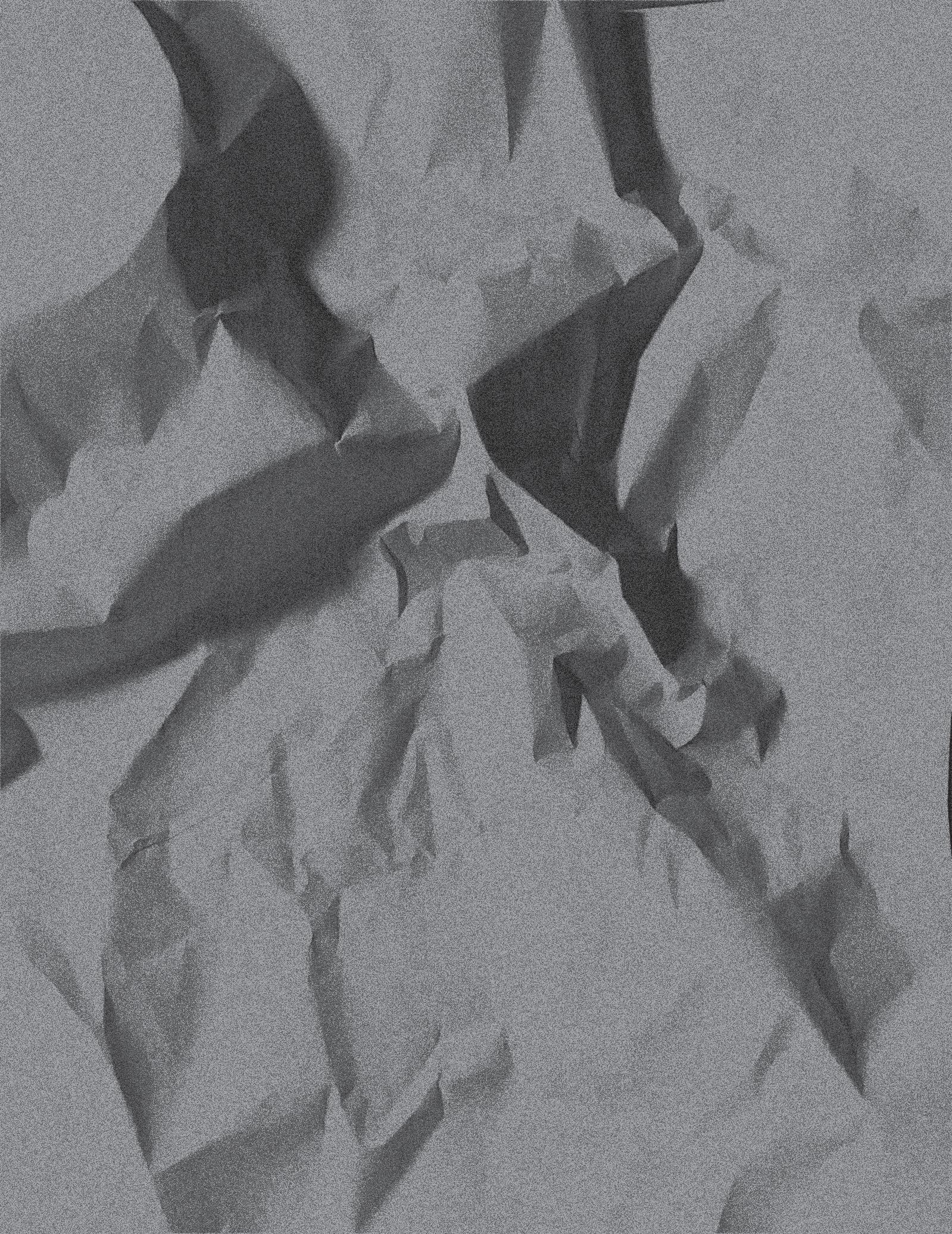
Maddox Mogenson (MM): My background in music is a lot less constructed than I wish it was, just because I have always been musical as a child. My mom would always sing to me, and I would always sing with her, and it just started there. I never took vocal lessons; I just would always sing with my mom back and forth. And then eventually I got into piano because I was like: well, I like singing, but what about other types of music? And I think it was first or second grade where I started taking piano. I did that for three or four years, but I always had this thing that I could do where I could hear a song and I could play the melody on a piano. Like I could hear a melody and then emulate it on a piano, and my parents were like, “What the fuck? How does he know how to do that?” From that I said, “Okay, I’ll start taking piano.” So that’s why I learned how to read music. You could also say that part of my background in music also comes from the fact that I grew up as a dancer. You also have to have musicality as a dancer. You have to, as we’re told, count songs out: one, two, three, four, five, six, seven, eight and move with it. That has also definitely played a part in how I listen to music and how I react to music.
TMM: Talking about MEDIA, what would be one instrument that would be essential to you? Say, like a guitar.

Fall 2022 Interview 10
MM: An instrument that was important to it, but didn’t really show up in the album a lot, was the ukulele. Every single chord progression on the album I would figure out on the ukulele. I would always mess around with chords, and honestly the ukulele made the album. I don’t even have a guitar and I wish I did, because playing these chords on ukulele feels so silly. But I love my ukulele. It’s not even my ukulele, it’s fully my friend’s ukulele. She left it in my house four years ago, and I was like, “I’m taking it, like, I’m using this a lot more than you are.” So, this is now mine. So, shout out Halley for the second-hand ukulele. But, the ukulele does appear in “Drunken Waltz,” and it’s almost all ukulele in “For the Night.” It’s always ukulele, and that still rings kind of true. But now I’ve been doing a lot of piano to figure that out, which is interesting because the sound is going to be different now that the process is different. But yeah, I could talk about the ukulele for hours.
TMM: In general, who are artists that inspire you?
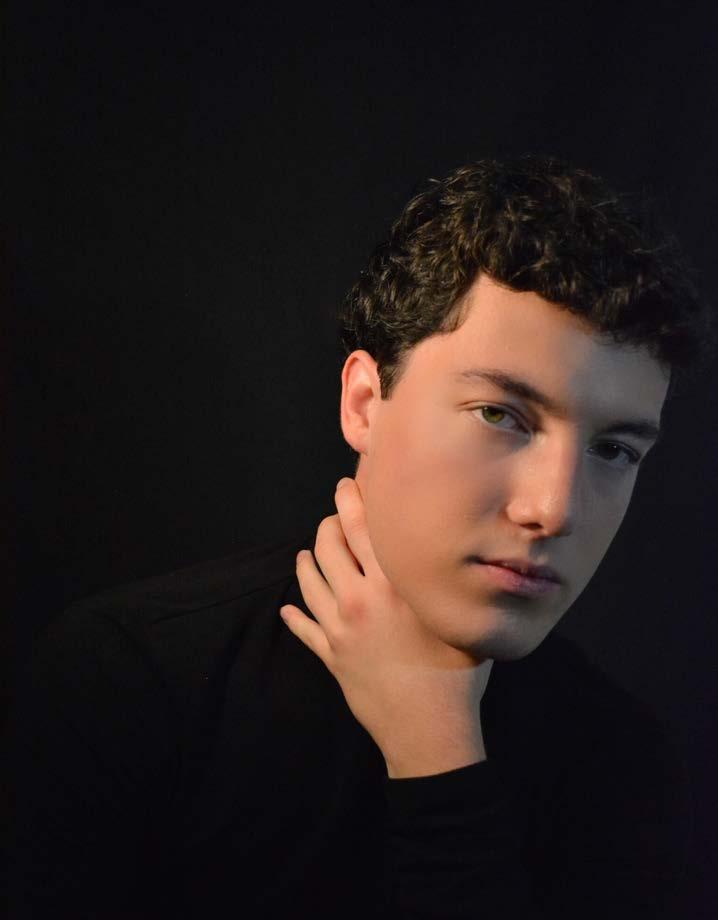
MM: That’s a big question. Writing wise, obviously Taylor Swift. She inspires everyone. Writing wise, also Lizzy McAlpine who went to Berklee, so she was a fellow Bostonian at one point. I love her stuff. I absolutely love it. And she has this unique way of finding unique comparisons and telling these first-person stories in excruciating detail. I think it’s beautiful.
TMM: What is the meaning behind some of the tracks on your album that are labeled as different “steps?”


MM: Yeah, that was really that was a fun thing to plan out. What I always like to describe is: What comes to your mind when you think of what changes people’s minds on a mass scale and what changes people’s opinions on things? And everyone’s always like “social media.” And I’m like, right. So, MEDIA. And that’s always a tagline and basically I made MEDIA an acronym for like my stages of grief because when I think about what shapes my opinions, it’s when I’ve had to grieve.
So, I thought let’s make it an acronym and break it down into five steps. M is Misery, which is just sadness. E is Enmity, like when you’re pissed off about whatever is going on. Like if it’s a breakup, you’re like, “Oh, this dude sucks, this person sucks. I hate blah, blah, blah.” And then after that, it’s Distraction. You’re like, “Whatever, he sucks. I don’t care. I don’t care.” But you do care. But you’re going to really pretend like you don’t. After that, Introspection, you’re like, “Okay, wait, I think I might care, but how do I learn to not care?” And then after that Acceptance, and it’s like, “Okay, I did care. And here’s what I learned from it and how I’m going to not let that happen again.”
TMM: What can we hope to see from you in the future? You answered it a little bit, but will you switch up your style or try to keep it consistent?
MM: I want to explore what I can do, and I think the best way to do that is to put myself out of my comfort zone. So that’s kind of what I’ve been doing. I’ve been writing too much recently and just spewing out a bunch of stuff, and it’s definitely different. I don’t want to say it’s
more personal than MEDIA because MEDIA is really personal, but I feel it’s a lot more intuitive. I feel like this one’s more from the heart and MEDIA is more from the head. Because MEDIA is all about thinking, not thinking, and overthinking, and I feel like this next project that I’m going to do is hopefully a lot more about feeling.
Designer: Juliana LaPara ( Design
)
11
• Justin Guthrie (Business Administration and Data Science)
SWINGIN’ SAFARI
A ROADTRIP THROUGH AFRICAN MUSIC
Nobody needs to be told just how spectacularly diverse African music is, and yet it’s still so often spoken of as a monolith in a way that tends to turn people off — or even scare them away. Those who recognize its scope, meanwhile, might find themselves questioning where to even begin to explore. African music thus presents a dilemma, even to those who fancy themselves musical adventurers. If this is to be taken as any sort of guide, then it must also be taken with an implicit understanding of its incompleteness. Crucial roads remain untrodden, including some of the usual entry points — juju, desert blues, afrobeat, afro-funk — and a single track could never
be enough to fully represent the sound of any genre, much less that of an entire country. With that in mind, it might be better to take this as a simple list: twelve pieces of music, ordered chronologically, taken from twelve different countries from myriad different regions, that together manage to show but a minute sliver of Africa’s full musical breadth. All twelve selections range in form, mood, and relative obscurity, but they all stand as uniquely life-affirming jewels in their own right. Most importantly, each one is able to function as a jumpingoff point towards further adventure and exploration, if one so desires.
Country: Ghana
Genre: Palm-wine
Year: Unknown
We begin our journey by looking at palm-wine music, which was some of the earliest African music to ever be physically recorded. Although this particular piece was recorded in Ghana, tracing back the history of the genre reveals an interlocking web of cultural origin points. It was Liberia and Sierra Leone from which palm-wine music first originated and diffused, the specific guitars they used were taken from Portuguese sailors, and it was Trinidadian calypso music that inspired its characteristic lilt and sway — which itself emerged from West Africa’s native Kaiso music, coming full circle. The disposition of “Kalabule” is sweetly melodic and full of that aforementioned breezy lightness, yet steeped in a gentle melancholy punctuated by brief, shambly lurches of plaintive motion. It sounds like fat raindrops zigzagging their way down long green leaves in semi-sporadic movements, swelling up and falling down.
WITH EQUATOR SOUND
Country: Uganda

Genre: Kenyan Pop
Year: 1966
Uganda in the mid-60s was poor even relative to its neighbors, with little in the way of recording studios or equipment. As a consequence, Ugandan musicians were essentially forced to travel to Kenya to record in studios whose local backing performers naturally played in the Kenyan pop style. The good news for them was that Kenyan pop music in the halcyon days of early electric amplification was some of the sweetest music ever produced, particularly in terms of tone — everything played and sung in a honey-milked balm with the understated restraint of a lullaby. What distinguishes this one: it’s even more inconceivably honeyed than most!
“NONA ENTE YO” — MOSES KATAZZA & FRIDA SONKO
“KALABULE” — KWAA MENSAH
Fall 2022 Feature 12
Country: Democratic Republic of the Congo
Genres: Rumba/Soukous
Year: 1966
The Democratic Republic of the Congo in the mid-60s was in the midst of something of a golden period, caught at the intersection between the lilting exuberance of the earlier Cuban-influenced rumba style and the faster and more complex soukous music it would soon evolve into. This track is actually an advertisement for laundry detergent of all things, but you wouldn’t know it from the gorgeous feathery lightness of singer/bandleader Rochereau’s voice. All the hallmarks of early soukous are here: rippling arpeggios played on crystal-toned guitars, call-and-response phrases serving as beguiling vocal hooks, and improvisatory guitar interplay that’s intricate, but never in a way that overwhelms the pervading aura of airy sumptuousness.
“UMCULO KAWUPHELI” — MAHOTELLA QUEENS
Country: South Africa
Genre: Mbaqanga
Year: 1973
Few sounds are as universal as the South African mbaqanga beat, infectious in its indomitable bounce and in its simplicity. The Mahotella Queens — stalwarts of the scene who were able to maintain a successful international touring career long after the genre’s initial popularity faded — were perhaps the most well-known of the many mbaqanga girl groups of the time. The similarities between the sound of “Umculo Kawupheli” and that of the American Motown-style girl groups from a decade prior are surprisingly plentiful. Listen for those similarly soulful and sweetly-sung uptempo group harmonies, the way the percussion emphasizes the upbeat, and the pure sunshine radiating from that guitar line.
MULATU ASTATKE
Country: Ethiopia

Genre: Ethio-Jazz
Year: 1969
The very existence of Ethio-jazz can essentially be traced to Mulatu Astatke, an eclectic arranger who found use for the textures and rhythms of jazz and Latin American music within the confines of Ethiopia’s unique musical modes. Astatke’s work is very studied in a way that can be a turn-off for those attracted to flesh and sinew, but it’s partly this academic sense of sophistication that lends the music its irresistibly classy elegance. The coup de grâce is its steel drums, which seem like an exotic curiosity at first but end up working their way towards a sizzling intensity right under your nose.
“SAVON OMO” — TABU LEY ROCHEREAU
“ASIYO BELLEMA” —
13
Designer: Megan Lam (Architectural Studies and Design)
— INTERNATIONAL CHARLES IWEGBUE AND HIS HINO SOUND
Country: Nigeria
Genre: Highlife
Year: 1975
Ghanaian/Nigerian highlife music is perfect for the budding African explorer because it represents a happy medium: eminently Western in both timbre and melody, with the horns in particular being very indebted to jazz, but distinctly African in its asymmetrical drum patterns. Throw in the syncopated guitars, and you end up with a music that’s both elegantly danceable and delightfully offbeat. All that to say that this might actually be one of the saddest songs in the highlife canon. There’s so much warmth and color and palpable love of life in those tones and rhythms, as well as in that gorgeous bittersweetness of a melody, that it’s all the more tragic when the horns and guitars start to droop and inevitably bottom out. Their respective solos, meanwhile, are drunk with yearning — fleet-foot on the rooftops, gazing down at the mid-century skyline.
— STELLA CHIWESHE
Country: Zimbabwe

Genre: Shona Mbira Music
Year: 1987
This is a piece by the self-proclaimed “Queen of the Mbira,” which is a unique type of thumb piano native to Zimbabwe useful for everything from tune-making to color and rhythm. The sound of “Nehondo” is recognizable to us as 80s pop, with drums enveloped by gated reverb, a bouncy pulse to its bass, and a brightly-produced slickness to it all. But deeper pleasures burble just underneath the surface, starting with the sound of the mbira itself: there’s an eerie dissonance to its music-box tones that imparts a cavernous quality onto its cascading shimmers. It’s the delicate mbira and marimba interplay that gently propels the piece forward, rhythms bleeding into tune and vice-versa.
Country: Zambia
Genre: Zamrock
Year: 1976
Zamrock, a fusion of traditional Zambian music with Western psych and garage rock, remains a safe entry point into the world of African music for the nascent explorer. People talk up the ferocity of its mangled fuzz, but the best Zamrock goes even deeper. Few sentiments evoke such a concise freeness of spirit as “I’m a free man / Driving on the freeway,” and there’s a happy lurch to its chorus — a downwards swoop to its vocal melody followed by an upwards rebound of bass — that really does sound like bumping up and down on the freeway. As an artifact from a brief period of societal and technological optimism, it’s a very poignant one — and it gets the limbs moving, too!
ODULA MELI” — MIGORI
SUPER STARS
Country: Kenya
Genre: Benga
Year: 1988
Kenyan benga music takes a lot of its character from Congolese soukous, with feathery quilts of interlocking guitars, lilting improvisations, and whirlwind tempos. Of course, Kenyan musicians still managed to make it their own. The underlying percussion is pushed much more upfront, the bass guitars imitate the unique syncopations of the Kenyan nyatiti lute, and the guitars are even more delicate, with a delightfully springy tone to them. Not much information survives concerning the Migori Super Stars, but their drummer nonetheless deserves to be honored for their heroic performance. Their syncopations are maddening in such a way that they risk derailing the beat entirely, but they somehow manage to keep a steady bounce through it all. Their alternating transitions from different pitches of percussion are magical bits of propulsion. Keep an ear out for those beautifully achy one-note guitar licks, and keep the other one out for the catchiest whistle hooks you’ll ever hear.
“I’M A FREE MAN” —
5 REVOLUTIONS
“NEHONDO”
“ODONGO
Fall 2022 Feature 14
“ENUM”
Country: Madagascar
Genre: Malagasy Folk
Year: 1992
Malagasy folk music, comprised of a polyethnic fusion of influences ranging from Arabic to Polynesian to French and beyond, is unique in that it forgoes the groove typical of the African mainland in favor of a near-total emphasis on melody. Although this piece consists of only two main instruments — the “kabosy,” a box-shaped lute likely descended from the ancient Arabic oud, and occasional flute accompaniment — the melody is astonishingly sophisticated in a way that sounds much more lush than its spare instrumentation would suggest. There’s a playful sinuousness at work here: every individual ebb and turn is melodically distinct, but each one gradually unfurls to reveal itself as but a small branch of a vast river teeming with life.
Country: Senegal

Genre: Mbalax
Year: 1996
On a continent known for the polyrhythmic complexity of its music, Senegalese mbalax might just be the most rhythmically complex genre of them all. Whereas the Afro-Cuban music it evolved from possessed a tentative grace to its languid grooves, the sound of mbalax is more akin to a meticulously controlled racket. Lithe flurries of guitar and alternating vocalists belting out Arabic-tinged calland-response vocal lines scramble to be heard amidst impenetrable thickets of sabar drum that not only provide backbone but lead the charge. What they’re hurtling towards here is a new digital modernity — everything played in quick flashes that express an urban bustle in their sheer busyness, and compacted to the point where all that’s left is an ultra-dense and ultra-tense rhythmic coil that threatens to burst at any moment. It’s the sound of careening headfirst into the new millennium.
Country: Cameroon

Genre: Mbenga-Mbuti Music
Year: 1993
Field recordings, in the ethnographic sense, tend to give even seasoned explorers trouble, which is understandable. Sometimes a culture’s concepts (or lack thereof) of musical elements like melody or rhythm are so opaquely specific to their culture that there’s a fundamental lack of universality to it, without much to encourage visiting outside of purely academic interest. What does tend to translate across cultures, then, is atmosphere, world-creation — something that compels people into visiting these sonic oases. This is a piece by the Baka people of Cameroon, played, as its namesake suggests, on the “ieta,” a type of bow harp with a sound reminiscent of a zither. Few pieces of music are so mesmerizing, so instantly evocative of a particular atmosphere (the forest) — a delicate, sprightly melody-slash-rhythm, forest drones overhead, and murmurs of children slipping in and out and gradually taking the form of distinct melodic shapes like an ever-shifting organism.
• Keene Munoz Quiros (Business Administration)
“DIHY” — MAHALEO
“IETA” — BAKA FOREST PEOPLE OF SOUTHERN CAMEROON
15
“MUSS” — MARIE NGONÉ NDIONE
New Songs
Old Albums Defining Musical Legacies On

Stage

Fall 2022 Editorial 16
Concerts are always touted as a more immersive and connected listening experience for music enthusiasts — and they often are. People can come together as fans to enjoy a carefully curated setlist from musicians and experience tracks as many artists meant for them to be heard. For many bands, the songs played pretty much match up with studio releases, but some offer truly unique concert experiences. Artists might incorporate extra instruments, take away seemingly essential parts, cut songs short or extend them with instrumentals, or alter the tracks in pretty much any way that suits them. This process is a large part of the beauty of live shows: you never really know what you’re going to get until the songs start being played on stage. With bands that have only been together for a few years or have a few albums, it is often pretty safe to say that live versions might match up to the songs on streaming. However, the situation becomes entirely different when acts with expansive discographies or a long history take the stage. As many of the key bands from the 1980s and onward embark on 30-year and older anniversary tours, audiences have seen new or different versions of songs from studio versions. Some changes are simply using different instruments, but many new versions alter the sonic qualities of tracks as a whole. This phenomenon begins to raise the question of which version truly is authentic, given that the official release is no longer included in any setlists.
New Order seems to exemplify the ethos of changing the canon of tracks during live shows particularly well, as they are constantly altering the ways in which songs are played. With origins dating back to the early 1980s – or the late 1970s as Joy Division – the band has had over 40 years of studio albums and defined much of what new wave (and later electronica) music looked like. The band has released several live albums since 2010, the most recent being Education, Entertainment, Recreation in 2021. The album covers a 2-hour set with selections from the entirety of their discography, as well as several Joy Division songs. While many of the tracks do appear in a pretty much untampered form, there are certainly intentional divides from previous versions that fall more in line with what the band sonically represents in the present rather than when the songs were first released. “Waiting for the Sirens’ Call” is perhaps the most obvious case of this process, with the instrumental backing driven far more by a drum machine and keyboard than the original release. The song first appeared on Waiting for the Sirens’ Call in 2005 and is practically unrecognizable. While the lyric delivery does not differ, the original version features light electric guitar strumming, synths, and even an entirely different drum backing. All of the elements of the newest version of the track are still present in some form, but what is played now is far more in line with the oeuvre of the band.
The Smashing Pumpkins, another key band of the 1990s, have also begun the process of altering live songs to best fit their legacy. On their most recent tour, the band (featuring almost the entirety of their original lineup), performed an acoustic version of “Tonight, Tonight” that differs greatly from the studio version – or any of the versions released on the deluxe edition 17 years later. In this case, the change was almost certainly intentional, as the lead vocalist and guitarist talked to the crowd about the tumultuous history of the group before diving into the song. The ability for the band to give a reason – albeit not clear – for the change is very important in a concert setting, as it acts as some acknowledgement of the experience and growth as a group.
The two bands’ choices highlight the importance of having the ability to tour and alter what a group’s music sounds like as they gain age and experience from their previous projects. Rather than tracks remaining entirely representative of a moment in time –


although many inevitably do belong as a fixed spot in time – bands can intentionally take a decades-old song, reassess its relevance, and recreate it live in a manner that doesn’t require a full re-release. While this change can certainly come from a place of rectifying wrongs or subtly displaying how a situation has been transformed or resolved, the alterations are just as important in the context of musical legacies. New Order has always experimented, but as its members age, there seems to be a greater attention to finding a single through line in the body of work, especially evident with the inclusion of Joy Division songs during live shows.
Perhaps this is all to say that concerts do still perform an incredibly important function within the world of music: they provide an opportunity outside the recording studio for bands to continue to experiment with old material – a choice that fans very rarely mind. Without concerts, the task of changing specific tracks within a group’s oeuvre to better fit present intentions would be gargantuan as compared to simply rehearsing a new version without the stress of the recording and production process. Artists often seem to take the option of providing a unique live show not only because it keeps fans coming back to the next one, but because they get to shape their own musical legacy. In defining what is legitimate within the context of an artist’s catalog, acts can take control of their old material once again to best represent what they want to leave behind.
• Terrance Dumoulin (Civil Engineering and Architecture)
17
Designer: Syd Tomasello (Civil Engineering & Architecture)
The early 2000s was a decade characterized by technological innovation that consumed the attention of the public in an unprecedented way. The early days of the internet allowed for music that hadn’t previously broken into the mainstream, like indie rock, to find its audience. Indie rock’s mainstream moment in the 2000s is impossible to discuss without mentioning The Postal Service. Consisting of a mere three people, the Seattle-based band’s first and only album, Give Up, seamlessly combines experimental and twinkly electronica with quirky and subdued vocals. But, before the release of Give Up, The Postal Service was virtually unknown. So, how did a debut album by an obscure band blow up so fast and become so successful?
The rise of the early aughts indie rock scene and the increasing presence of the internet are directly tied to the success of Give Up Other bands like The Shins, Modest Mouse, and Death Cab For Cutie gained immense popularity in part due to indie rock becoming more visible in popular culture through its inclusion in movies and other digital media. However, The Postal Service was one of the first bands to explode onto the scene with their distinct sound. The indie rock of the past was typically guitar-heavy and harsh in terms of subject matter, but Give Up exchanged these musical tropes for electronica and soft, emotional lyrics. This tone change captivated the hearts of many, and eventually Give Up became their record label Sub Pop’s second-best selling record of all time.
The Postal Service consists of Ben Gibbard, better known as the frontman of Death Cab For Cutie, and producer Jimmy Tamborello, with additional vocals from Rilo Kiley’s Jenny Lewis. Simultaneously working on their solo projects, Gibbard and Tamborello decided to collaborate by sending each other CDs through the mail. It took under a year to create the album, with Tamborello creating beats and Gibbard writing lyrics and recording vocal tracks based on the production he was sent. Before the album’s release, The Postal Service’s record label warned them that the record wouldn’t receive mainstream success due to the obscurity of their background. They couldn’t have been more wrong.
The success of the album mostly hinged on its most popular single, “Such Great Heights.” Sub Pop, the record label behind the album, got popular bands like Iron & Wine to cover the track when the album was first released and soon enough, the song was everywhere. Big brands like M&M used it in advertisements and the Iron & Wine cover was featured on the Grammy-award winning soundtrack for the movie Garden State
“Such Great Heights” is by far the standout track. The track is upbeat and hopeful, ironically contrasting the theme of heartbreak
that is present throughout the album. It’s a song about leaving the rest of the world behind for love. The danceable yet atmospheric synthesizers throughout the track keep it moving and encapsulate the feeling of absolute devotion Gibbard conveys. But ultimately, heartbreak is the core of the album. Gibbard took inspiration from an ex-girlfriend breaking up with him after moving to Washington D.C. to write the first song on the tracklist, “The District Sleeps Alone Tonight.” Almost every song on the album includes references to his grief after the breakup. Tracks like “Recycled Air” and “We Will Become Silhouettes” use metaphors to demonstrate Gibbard’s anguish. Hollow percussion and echoey electronic flairs add depth to Gibbard’s pain when he likens his failed relationship to breathing in stale air on a plane and during an apocalypse. Other times, he chooses to be literal: “Nothing Better,” “Clark Gable,” and “Brand New Colony” are more overt cries of heartbreak and pleas for his lover to take him back.
While Gibbard’s songwriting is poignant, Tamborello’s production solidifies Give Up as a seminal record from the early aughts indie movement. Tamborello layers textures of soft noise with rhythmic synthesizers and bouncy percussion, creating a sound that’s eclectic but never too cluttered. Unconventional sounds like a metallic plucking noise are utilized on tracks like “Sleeping In,” while more traditional string instruments ground “The District Sleeps Alone Tonight” and “Recycled Air” during their heavily electronic moments. The back half of the album is more abrasive as Gibbard descends deeper into hopelessness and grief. “Brand New Colony” demonstrates how the love Gibbard shared in “Such Great Heights” is no longer feasible with lyrical parallels between the tracks. The album comes to a striking end with “Natural Anthem,” which is a five-minute crescendo of cacophony that ends with an earnest reflection on the heartbreak Gibbard expresses throughout the album.
Despite the amount of success the project had, The Postal Service came to the decision that Give Up was the only album they would ever release due to the time constraints it posed on their main projects. Forever a snapshot of indie music during this time, Give Up encapsulates the endearing electronica and emotionally charged lyricism that made 2000s indie music so special.
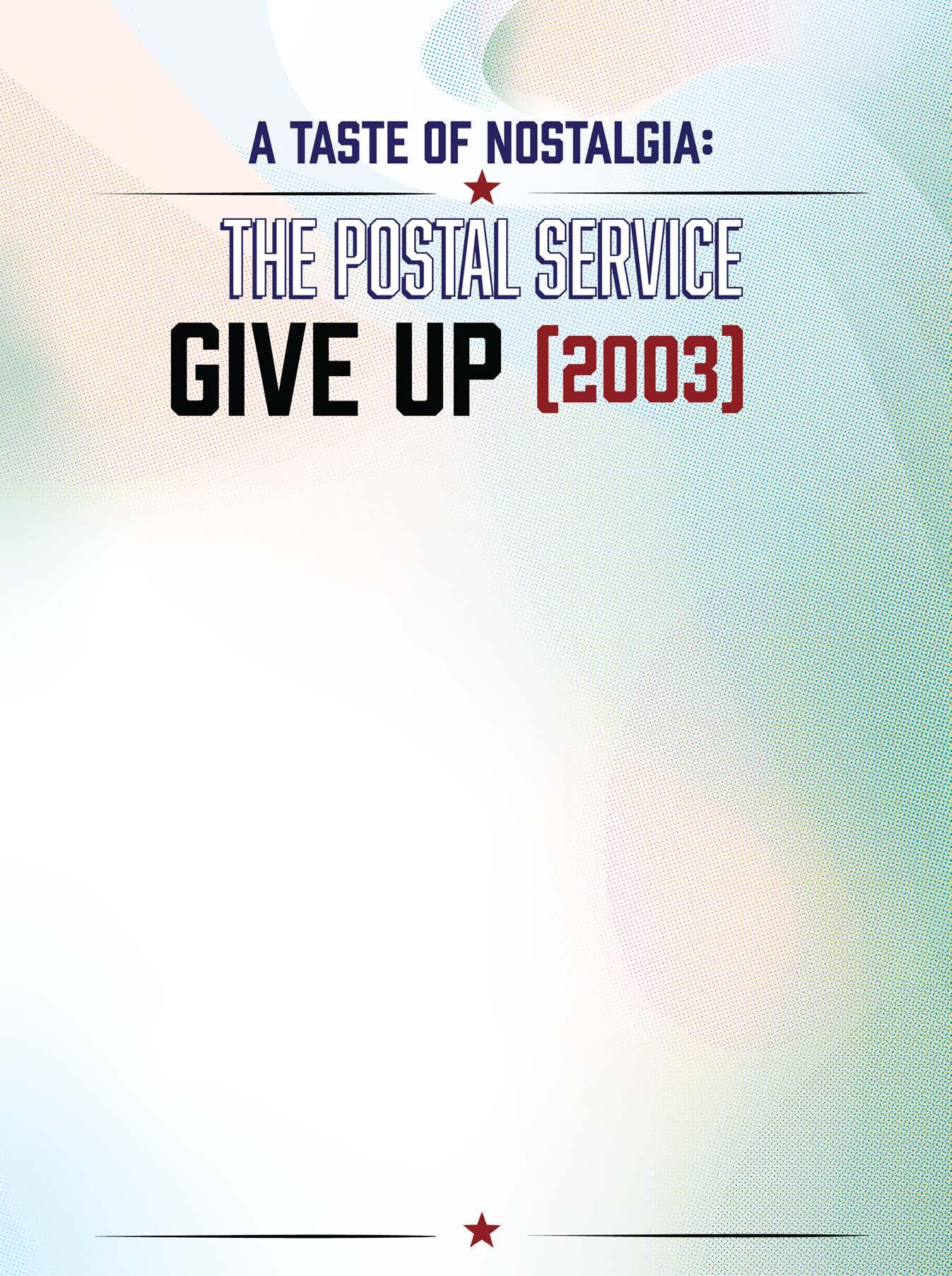
Recommended Tracks: “The District Sleeps Alone Tonight,” “Such Great Heights,” “Nothing Better,” “Clark Gable”
• Rilyn Szabo (Behavioral Neuroscience and Design)
Fall 2022
18
Designer: Laura Mattingly (Communication and Design)
Etcetera
Eyeliner is in, cringe is dead, and American rock band My Chemical Romance has near-singlehandedly resurrected emo from its stylishly tacky grave.
For many misunderstood loners, My Chemical Romance’s breakup in 2013 signified the end of an era. Knee-high converse and beanies were traded in for Vans and flower crowns as what seemed to be the final pillar of classic emo fell. Since their anthemic track “Welcome to the Black Parade” topped the charts in 2006, My Chemical Romance has been the widely accepted face of mainstream emo, along with bands like Fall Out Boy, Panic! At the Disco, The Used, and Paramore. By the time My Chemical Romance disbanded, most emo bands still standing began to change their sound. Fall Out Boy and Panic! at the Disco — which made up the so-called “emo trinity” along with My Chemical Romance — are still putting out new music today, but their new material is a far cry from the pop-punk origins that launched them to stardom.
Emo, short for “emotional hardcore,” was many things: a subculture, a music genre, a demeanor, a fashion style, and often an insult. As a genre, it ranged from pop-punk to screamo to more classic alternative rock, but its core tenet was the lyrics. While other hardcore genres tended to focus outward — criticizing culture and politics and “the man” — emo honed in on inner struggles: romance, fear, insecurity, and so on. Emo music was deeply introspective and personal by nature, and the phrase “I’m feeling emo” quickly became synonymous with “I’m feeling down.” Emo fashion’s heavy use of black reinforced this perception. While there were many variations that evolved out of emo fashion (like the forever-iconic scene queens), the biggest emo staples were fairly simple: tight black pants, black converse or combat boots, and the straightest, blackest, most dramatic and inconvenient swooping bangs imaginable — the less you could see, the better.
While emo had gone fairly mainstream by its peak in the mid-to-late 2000s, the word “emo” was still best used as a selfdescriptor — if someone else was calling you emo, it was more often than not an insult. Emo dealt heavily with challenging gender norms, especially for men. The culture encouraged talking about mental health and emotions at large, and the style was fairly androgynous. It wasn’t uncommon to hear the words “emo” and “gay” in the same sentence, and the subculture never got popular enough for emo to be considered remotely “cool” in any way.

My Chemical Romance was the beating heart of emo, and their song “Welcome to the Black Parade” is often cited as the “emo anthem.” They embodied the genre’s over-the-top theatricality with high-concept albums and rock operas, as well as dramatic (and often blood-splattered) costuming. After only four studio albums and a collection of singles, the band’s split was treated as a tragedy of epic proportions, and fans grieved for the band extensively. March 22, 2013 would be known as the “emo day of mourning” for years to come. Some held out hope that the band would reunite and continue making music, while others accepted the grim reality that they’d just have to pray for a nostalgia-bait reunion show in a decade or two.
On October 31, 2019, it seemed the wait was finally over. My Chemical Romance announced a single reunion show in Los Angeles, and as expected, fans went wild. Older fans jumped at the opportunity to revisit an old passion, and those who had come to the emo party late were finally offered the chance to see their favorite band in concert. To no one’s surprise, tickets sold out in minutes.
After their performance in December, fans only had to wait a month before a full-scale international tour was announced in January 2020. The entire North American tour sold out in under six hours. The excitement of a full-scale My Chemical Romance return was rising rapidly, but only a few months later the band was forced to delay their
19
return due to COVID-19 — first to 2021, then later to 2022. Fans were left stewing in their homes for over a year, the anticipation mounting more and more with each delay. Increased time online brought with it increased online discussion, and throughout the initial quarantine period, the My Chemical Romance fanbase was born anew on sites like Twitter and TikTok.
Since the band hadn’t released anything new since 2014, there was limited material to work with. Speculation on the reunion shows began to grow stale, and the fans began to return to what they knew: the My Chemical Romance fanbase of the mid-to-late 2000s. My Chemical Romance was a fairly well-connected band by 2013, and bands that had tangential relationships to My Chemical Romance or its members were suddenly being discussed online again as well. Fall Out Boy, an iconic emo band of the era, had befriended My Chemical Romance when they performed at Warped Tour together in 2005. Although their newer work received significantly less attention, many

fans returned to their first four albums, which are considered emo classics. The Used vocalist Bert McCracken and Gerard Way were close friends in the early days of My Chemical Romance before a mysterious falling out, and speculation on whether certain The Used songs were written about Gerard Way also brought the band back into the emo sphere. Even Cobra Starship, a dance-pop band that has never called itself emo, was partially revived because of their social connections to pop-punk and emo bands like My Chemical Romance and Fall Out Boy. They even have an aptly named track from 2009, “Pete Wentz is the Only Reason We’re Famous,” titled after Fall Out Boy bassist, lyricist, and fellow emo darling Pete Wentz.
After two years of parading around the corpse of a mostly dead fanbase, fans were finally given something real to chew on. Less than a week before their tour commenced, My Chemical Romance released their first song since 2014, “The Foundations of Decay,” without warning. The reception was nothing less than rabid. If former fans
Fall 2022 Feature 20
didn’t believe emo was back before, they certainly believed it now. Only a few days later, the reunion tour officially began.
New music and the excitement of a tour finally allowed emo’s stagnant revival to evolve. No longer a sad, bloated corpse attempting to return to the good old days, emo has been changing in subtle but exciting ways. Guyliner isn’t as shocking in 2022 as it was in 2009, and Gerard Way has taken the genre’s resistance to gender roles and love of theatricality a step further with his eclectic collection of concert outfits, which range from a cheerleading dress to Jackie Kennedy to a full-on clown. It feels distinct from the shock-value gay stunts the band used to pull on stage, where members would kiss during shows with the excuse of pissing off homophobes. Gerard Way has mentioned numerous times in interviews that he strongly identifies with femininity and tweeted in 2015 that he uses he/they pronouns. As emo was largely for those who considered themselves social outcasts, many LGBT people identified strongly with the
subculture, and it’s uplifting to see the actual bands who represent the subculture do more to discuss LGBT issues than just making out on stage when the urge strikes them.
Despite the current emo revival, it’s likely that when My Chemical Romance goes back into hiding, emo will as well. It’s a beautiful and absurd product of its time, and while it likely wouldn’t survive long in the present day without a highly anticipated reunion to bolster it, it’s almost poetic how emo has been given a second shot at redemption, if only for two short years. Free from the confines of middle and high school, where many emo kids first discovered the genre, fans have been given the unique opportunity to revisit the music and culture they loved without the juvenile baggage. Fans gave emo a second life not in spite of its distinctly uncool status, but because of its distinctly uncool status.
 • Ev Ogier (English)
• Ev Ogier (English)
21
Designer: Xin Li (Design)
DISCOGRAPHY


PJ Harvey is one of the most critically acclaimed British musicians of the last few decades – and for good reason. Her instrumental talent, particularly with the guitar and saxophone, and natural songwriting ability has garnered her massive praise and attention since the release of her band’s first project each new project, Harvey has demonstrated her musical prowess, combining her childhood influences like Jimi Hendrix, Nina Simone, and the Pixies with modern influences to create an eclectic sound. These influences – merged with collaborations from musicians such as Radiohead frontman Thom Yorke and ex-boyfriend Nick Cave –have helped make Harvey’s discography one of the most diverse of any artists in living memory.

Fall 2022
22
Etcetera
In 1991, Harvey, along with drummer Rob Ellis and bassist Ian Oliver, formed the band PJ Harvey. A year after the band’s formation, and shortly following their signing to the indie label Too Pure, the trio released their debut studio album Dry, which was met with almost immediate critical praise. Opening track “Oh My Lover” sets the album’s tone, building from a moody blues track into an all out punk anthem about infidelity. Subsequent tracks like Riot Grrrl-esque
“Victory” and noise folk-inspired “Plants and Rags” – which is by far the strongest song on the album – not only emphasize the band’s diverse songwriting tactics and strong lyricism, but also their stunning mix of violin, guitar, and vocals. With this highly complex and impressive album released as their debut, PJ Harvey were immediately a major player in the British and global punk and rock scenes.
After the band dissolved, Harvey began to develop a solo career under the same name. She released her first solo project, To Bring You My Love, in 1995. To Bring You My Love diverges from the previous albums’ integral punk sounds. As a solo artist, Harvey’s diverse musical influences, particularly folk and blues, combined with her emotive lyricism and storytelling on every track.
“Down By the Water,” one of the most well-known songs of Harvey’s career, encompasses many techniques – a deeply distorted bass line, violin plucking, and rhythm sticks, to name a few – that

Rid of Me, the second and final album by the PJ Harvey band, opens with one of the strongest songs in her career: the title track, “Rid of Me.” This searing revenge break up track perfectly encapsulates the feelings of heartache, anger, and betrayal. With Harvey’s slow and seductive voice building up to the rage-filled chorus, this song masterfully translates an emotion and experience perfectly into sonic form.
While the rest of Rid of Me is still overall strong, it is far less intriguing, sonically diverse, and incohesive than Dry. The album’s structural weakness is likely tied to the tensions the band felt at the time, which ultimately led to the band’s disbanding in 1993.
DRY RID OF ME TO BRING YOU MY LOVE
blend perfectly with Harvey’s whispering and pleading voice. Other tracks like “C’mon Billy”– with its surprisingly aggressive use of the acoustic guitar to reflect the angry storytelling – and the title track “To Bring you My Love” – a slow burn blues song where Harvey wails over repeated electric guitar chords – capture this element of the album clearly. To Bring You My Love was another commercial success and succeeded in crossing over PJ Harvey into America, a country that would deeply shape her music in the future.

23
1992 1993 1995
IS THIS DESIRE?

While To Bring You My Love was heavily influenced by the music of Harvey’s youth, her following album, Is This Desire?, drew inspiration from modern influences. The record is a peculiar mix of electronic music – particularly popular UK genres of trip hop and industrial – and the folk and punk Harvey has used throughout her career. While it is the strangest listening experience out of any of Harvey’s previous works, it is also the strongest. As Harvey has shown, she shines brightest when presented with the opportunity to create complex songs from her unique influences. The wonderful blues
ballad “Angelene” starts the album off like the openers of her last two recorders, slowly building energy into an explosive release of both sound and frustration at the end. Starting with the album’s third track Harvey surprises listeners by utilizing a musical sequencer. As a result, “The Wind” features trip hop elements alongside Harvey’s more familiar guitar. The industrial songs on the album, “A Perfect Day Elise” and “Joy,” are by far two of the heaviest songs Harvey has done in her career. Since its release, “A Perfect Day Elise” has become Harvey’s most successful song on British radio.

Replacing the much more British influences that shaped Is This Desire?, Stories From the City, Stories from the Sea took inspiration from America – and particularly New York’s developing indie rock scene in 2000. While the album is strong overall, it is a step back for PJ Harvey, an artist whose exploration of new sounds has always been combined with a willingness to blur the lines between genres. Stories
STORIES FROM THE CITY, STORIES FROM THE SEA UH HUH HER
From the City, Stories From the Sea is largely a full-fledged embrace of indie rock, but it does so by removing much of her unique musical perspective. Songs like “Big Exit” or “Good Fortune” are generic and bland, but others do stand out. The album shines in its second half, where closer “We Float,” a piano ballad, makes the listener feel like they are, well, floating.
After a four-year period, Harvey released Uh Huh Her, a much more intimate album than Stories From the City, Stories From the Sea
On the record, Harvey plays all the instruments except the drums, which are played by her former bandmate Rob Ellis. It departs from the previous album’s more indie rock sound to go down a much heavier route. Much of this album alternates between rough, grungy tracks like “Cat on the Wall,”’ to slower acoustic folk tracks like “The Desperate Kingdom of Love.” Since the beginning of her solo career, Uh Huh Her is the first album to focus on the sounds that got PJ Harvey off the ground in the first place. This album once again proves that despite the lighter nature of her previous project, she was still perfectly capable of creating the loud and abrasive songs of her earlier career. While the album doesn’t introduce many new sounds to PJ Harvey’s discography, it does cement the reasons she is viewed so highly as a musician.
1998 2000 2004 Fall 2022
24
Etcetera
Continuing her trend of intimate projects, Harvey’s seventh album White Chalk is her moodiest. The record’s indie folk production loses much of the heavy electric guitar focus to instead focus largely on the piano – which, funnily enough, is the name of a track on the album. This shift in focus allows Harvey’s vocal performance and devastating lyrics to dominate the songs. Tracks like “When Under the Ether” and “To Talk To You” cover themes like substance abuse, intense loneliness, and many other negative feelings and aspects of life. While Harvey has never shied away from these sadder and darker topics, the complete introspection seen in White Chalk reflects a new level of darkness in Harvey’s discography. These more serious themes provide an interesting departure from the rest of Harvey’s career, but the album feels a bit repetitive, creating a thematically interesting album that isn’t necessarily worth re-listening to.
WHITE CHALK LET ENGLAND SHAKE



The monotony found in White Chalk doesn’t carry through to Harvey’s eighth album, Let England Shake. Since To Bring You My Love none of her albums have incorporated such a large array of sonic elements including – until Let England Shake. Harvey uses strange samples, like the use of guitar from They Might Be Giants’ “Istanbul (Not Constantinople)” in the record’s title track. She also uses the saxophone, an instrument that she had played as a child, to create this sonically unique album. Lyrically, the album focuses on politics, particularly on the domination of England, America, and the West
and the instability of that domination. It is filled with rather scathing critiques of this political domination and the devastating impact it has had on people globally. These important political messages are weakened slightly by Harvey’s clunky and inexperienced political lyricism, which lacks subtlety, making many of the songs feel more preachy than thought-provoking. The alternative rock sound of the album also impacts its political message, sometimes making it feel a bit too happy for such serious issues. This dissonance between the sound of the songs and the lyrics makes it hard to take the album seriously.
THE HOPE SIX DEMOLITION PROJECT
The clumsiness of Harvey’s first entry into political commentary is to be expected from an artist so inexperienced in this type of lyricism. In her most recent album, The Hope Six Demolition Project, Harvey showed that she was able to more maturely handle these political conversations, this time lyrically focusing on America while still incorporating the diverse range of sounds used in Let England Shake. Through discussing specific political issues, instead of the more general critiques of Let England Shake, Harvey is able to make her discussion of these issues feel more like stories that much better fit in with the alternative rock style Harvey continued to use within this album. Songs like “The Hope Six Demolition Project,” which is a reference to the actual HOPE VI projects where houses were made
to replace projects that had been torn down by highway projects, and “River Anacostia,” a song about the polluting effects of the Anacostia River, are great examples of this use of storytelling for political purposes. The album also feels more serious because of its use of a more intense bass inspired by some of Harvey’s earlier punk experience . When this album was released in 2016, nearly three decades into making music under the name PJ Harvey, Harvey has continued to prove that she can constantly push the boundaries of her music and the genres that she is inspired by.
 • Dakota Castro-Jarrett (Journalism)
• Dakota Castro-Jarrett (Journalism)
2007 2011 2016 25
Designer: Syd Tomasello (Graphic Design)
As one of the oldest cities in the US, Boston is full of rich, complex history – one of abundant fashion trends, art developments, and music movements that have created a paradigm for artists across the nation. The hardcore punk scene in Boston allowed a cathartic release for a city in turmoil and was the birthplace of some of the most influential bands in heavy music.
Music movements are often inspired by the environment they grow in – and the Boston hardcore scene was not exempt from this standard. A time filled with racism and violence, the 1980s and 90s left a dark stain on Boston’s past. Anti-immigrant movements stemming from white supremacist hate groups led to arson, vandalism, and assault throughout the city. The crack epidemic riddled Boston with addiction, and mob and gang activity were at an all-time high.
Hardcore punk music was birthed from this turbulent history. As a genre, hardcore is typically categorized by its abrasive, fast, and heavy nature. At its core, it is vehemently anti-pop and anti-music industry, and the scene focuses on DIY values. It rejects all that is pretty and clean, and leans into the ugly and aggressive. Hardcore bands typically tout unity, acceptance, and self-empowerment. The movement ultimately took on the characteristics of the city it was founded in: violent, boastful, pugnacious, but full of pride. Over time, Boston hardcore shifted into something more eclectic and purposeful, but its foundational attitude was never completely lost.
Slapshot and the Straightedge Movement
”Get your booze away from me
Keep your pills out of sight
Don’t get smoke in my face
Or you’ll get the Straight Edge in your face”

Slapshot, founded in 1985 by members of other successful, dissolved hardcore groups (Negative FX and DYS), took the Boston scene by storm. The release of their debut album Back On The Map and subsequent popularity contributed to a rise of the straight edge movement.
These matter-of-fact, pointed lyrics from Slapshot’s “Straight Edge In Your Face” are the crux of the straight edge movement’s beliefs. In response to the excessive drug use and perceived hedonism of the 1970s punk scenes, a fraction of punks were strongly against drug and alcohol use. With the phrase coined by formative DC hardcore band Minor Threat in 1981, the ideals of the straight edge subculture spread through other cities and fractured the punk scene as it stood. Straight edge for most meant refraining from illegal drugs, alcohol, and nicotine, but some more radical believers extended the ideals to abstaining from promiscuous sex, adhering to vegan standards, and even forgoing prescription drugs and caffeine. Radical straightedge followers became angered by those who did choose to use drugs, resulting in clashes.
An attack on Lansdowne St. against drug users and dealers by militant straight edge assailants, as well as other violence harkened by those who claimed to be part of the movement, led to backlash across the country. The rise of the short-lived “Bent Edge” countermovement spoke against the intolerance of straight edge. Despite these controversies, however, the straight edge movement of Boston remained strong throughout the 1980s.
90s and the Rise of Converge


As many punks grew tired of the violence and conflicts occurring in the scene, some began to initiate change through their own music. Salem’s Converge brought a fresh sound to the table with the release of their debut album Halo in a Haystack in 1994. Through the band’s use of polyrhythms, scream-style vocals, and slower, more intense movements, Converge melded the sound of hardcore punk into something somehow both more chaotic and melodic than its

Cover Story 26 Fall 2022
precursors. Though best known for their critically acclaimed 2001 release Jane Doe, the rise of Converge and similar bands in the 90s eventually changed the overall sound and demeanor of Boston hardcore.
Following Converge’s lead, bands like Cave In, Bane, and The Hope Conspiracy experimented beyond the confines of typical hardcore punk, leaving some of its chopiness behind. Influenced by other metal genres, atmospheric elements reminiscent of shoegaze, and impeccable technical playing chops, the hardcore sound evolved into something new. New fans were flocking to satellite cities like Worcester to experience this fledgling sound away from the aggressive Boston crowd.

2000s, Hardcore Revival, and Have Heart
Perhaps one of Boston’s most highly acclaimed hardcore bands is Have Heart. While experimental artists like Converge remained forces throughout the 2000s, a new crop of young bands were inspired to return to the more classic sound of the 80s. Have Heart released their debut album The Things We Carry in 2006, solidifying a renaissance of the straight edge movement.
“Armed, armed with a mind
I’m going to strengthen my action with thought
Make use of the gift that I got and walk fearless because I’m armed with a mind
A weak offense when you step to this Mind over matter is power over fists”
These lyrics from “Armed With A Mind,” like many of Have Heart’s songs, are designed to empower. Though some past straight edge movements were centered around violence, Have Heart, along with other pioneers like Ten Yard Fight and In My Eyes, focused on unity, acceptance, and self-empowerment. The Things We Carry oozes youthful rage and callbacks to early hardcore tracks, but still feels fresh, structured, and clean, summing up the 2000s hardcore scene.
Have Heart’s reunion in 2019 at the Worcester Palladium brought in over 10,000 people. Though Boston’s hardcore scene hasn’t always been clean of controversy, the impact that it has had on thousands of young people is not to be discounted. Decades of artists and listeners have been inspired by the intense passion in hardcore punk, especially from bands like Slapshot, Have Heart, and Converge.
Today, Boston’s hardcore scene is relatively slim. This may be because there is a lack of underground venues wanting to host heavy punk bands, or it may simply be due to hardcore’s current lack of relevance in the cultural zeitgeist of our youth.

There is never a time where we don’t need unity among young people. Hardcore punk is about having beliefs and sticking to them –about unifying and empowering eachother to inspire positive change. Punk will rise in Boston again at a time when it is needed most. But for now, we can still enjoy the classics from the 90s, or catch a touring band at the Middle East.
 • Hannah Lowicki (Marketing)
• Hannah Lowicki (Marketing)
27
Designer: Ava Ackerman (Business and Design)


Fall 2022 Feature 28


29
n p r
Tiny Desk Concert
Finding Joy in Small Spaces
NPR’s Tiny Desk, cluttered with its variety of eclectic items, has become a centerpiece of American music coverage. The video series has grown increasingly popular over the past decade for its unique insight into listeners’ favorite music. For those unfamiliar, Tiny Desk Concerts take place behind the desk of Bob Boilen, creator of the Tiny Desk Concerts and the program All Songs Considered. Artists arrange their instruments within the confines of the desk, their performances backed by bookshelves packed with memorabilia. The small space allows for a limited amount of instruments, and each concert is filmed live, resulting in a more raw and less-produced sound than a typical live show.
While they feature artists with large followings, the concerts also highlight smaller artists, introducing listeners to an array of genres including pop, reggae, electronic, alt-rock, folk, soul, and more. The concerts convey a warm atmosphere in which artists laugh and celebrate making music with one another, paring it down to the bare bones of what makes music joyful and collaborative. Other performances are more contemplative, even somber, but both invoke the artist’s vitality.
Boilen formulated the idea jokingly after seeing Oregon-based artist Laura Gibson playing at a local bar and inviting her to play at his office desk. He quickly became enraptured with the idea. Boilen explained his interest in creating more transparent, accessible live performances to Vox. “There was something that happened there I never would’ve imagined,” said Boilen. “It was the intimacy, as I’ve come to understand it. There was nothing between you and the artist. There was no silly music video of someone running through a field. It wasn’t lip-synced. No reverb,
studio niceties, just Laura’s voice coming through a beautiful microphone. Humble. It just worked.”
With over 1000 Tiny Desk concerts, a more comprehensive list of the best concerts would be a much greater ordeal, but given the time and space available, below are some of the most notable Tiny Desk performances based on ingenuity, quality, and lasting effect.
Omar Apollo (2022)
Omar Apollo’s 2022 Tiny Desk Concert in celebration of Latinx Heritage Month is one of the series’ most joyful performances. Accompanied by an entire 12 piece band packed behind the desk, including guest appearance Las Mariachis Lindas, Apollo harks back to his favorite childhood artist, Juan Gabriel, with traditional ballad, “En El Olvido.” Throughout, he demonstrates his range vocally and in genre, as well as a palpable exuberance between himself and the instrumentalists.
Switching to R&B with “Evergreen (You Didn’t Deserve Me At All),” Apollo delivers all the sincerity and passion he describes in his lyrics. He lifts the mood of his set by closing with a stunning performance of his new song, “Endlessly,” occasionally referencing his hand for lyrics for this bouncy, clap along, track. Overall, Apollo’s concert demonstrates a key aspect of Tiny Desk, the beauty of collaboration in music, which can infinitely elevate songs. From the winds to the vocalists, the camaraderie made this performance easily one of the best Tiny Desk concerts.
USHER J I D Mac Miller DUA LIPA
H.E.R
B T THE ROOTS Fall 2022 Editorial 30
Harry Styles Omar Opollo
Sylvan King Princess Florence + The Machine Anderson
.Paak
&
The
Free Nationals Taylor Swift Tokischa ADELE Alicia Keys Lizzy McAlpine
Tyler, The Creato
Sylvan Esso (2015)
“Just imagine you’re the seaweed in Ursula’s cave,” said singer Amelia Meath of electronic pop duo Sylvan Esso, as she encourages the audience to get up and move to her and producer Nick Sanborn’s performance of “H.S.K.T” (Hips, Shoulders, Knees, and Toes). Their 2015 performance is not only one of Tiny Desk’s most popular performances with 1.1 million views, but also an incredible testament to their abilities as artists. Numbering only two in addition to Sanborn’s computer and sampler, the concert is less crowded than the typical Tiny Desk act. Nevertheless, they fill the space with their presence and resounding melodies. Meath’s lilting voice and Sanborn’s hypnotic background electronica scattered with chimes throughout “Coffee” proves a mesmerizing combination, as Meath fluidly dances throughout the set. The connection between the two artists is much more tangible in the Tiny Desk space, making the computerization of their sound more personal and heartfelt as opposed to digital.
Sampha (2017)
London-based soul artist, Sampha, incorporates his ethereal chord progressions and complex lyrics in his standout 2017 Tiny Desk performance. He sits at an electric keyboard and a grand piano, playing his own accompaniment for all three songs – beginning with the eerie tones of “Plastic 100°C.” Making his concert particularly notable is his distinctiveness as a performer. His expressions of grief through complex lyricism reinforce his ingenuity as an artist, and illustrate his abilities. “(No One Knows Me) Like the Piano,” dedicated to his late mother, describes his gratitude to the piano he played growing up and for those he grew up with, expressing meaning through his incredible instrumentals. In “Blood on Me,” he masterfully changes tempo, rhythm, and keys, maintaining control over his vocals. It’s much easier to appreciate how visibly talented he is in this more intimate setting.
The Roots (2017)
Lastly, The Roots tore the house – or, perhaps, the desk – down with their indescribably brilliant 2018 Tiny Desk concert featuring singer Bilal. The seven wind instrumentalists stroll to the desk single file, joining drummer Questlove and prefacing the arrival of Bilal and emcee Black Thought with a jam session and a trumpet solo. The blasting winds set the stage for Bilal and Black Thought’s groundbreaking, profound lyricism from “It Ain’t Fair” – inspired by the 1967 Detroit riots. “Some people say ‘Let Jesus take the wheel’/Others say ‘Thou shall not kill’/ But they don’t tell me that you ain’t gon’ pay my bills/We’ve come so far yet here we are /Ruthless God, presumed inferior/ We ain’t scared of y’all” Bilal screams, stretching his voice to extraordinary heights and creating a buildup of energy unmatched by any existing NPR concert.
Harry Styles Omar Opollo USHER J I D Mac Miller DUA LIPA Sylvan Esso King Princess Florence + The Machine Anderson .Paak & The Free Nationals Taylor Swift Tokischa ADELE Alicia Keys Lizzy McAlpine H.E.R Tyler, The Creato r B T S THE ROOTS
• Sophia Haydon-Khan (International Affairs)
(Business and Graphic Design) 31
Designer: Haidyn Redmond
The

















death of Concert Etiquette

Fall 2022 Editorial 32
"No peeing allowed”
At the Boston show of their “Horseshit on Route 66” tour, Orange County-based duo The Garden performed for a crowd of insanely excited fans wearing jester costumes. The white and black face paint wasn’t out of the ordinary, nor was the stench of B.O. coming from the amped up crowd of teens and 20-somethings. What was shocking was the fact that the crowd up near the barricade parted to make way for venue staff – armed with mops – to clean up a puddle of pee in the middle of the pit. Some fans laughed at how ridiculous the situation was, chanting “PISS! PISS! PISS!” around the scene, while others stood stunned as it was revealed that the culprit allegedly did the deed to avoid losing their spot amongst the packed crowd, only to leave the venue soon after.
Though definitely the most insane concert I’ve attended to date, this isn’t the only wild story concert-going fans can tell from the last few years. After years of lockdown making concerts too risky to hold, let alone attend, fans and artists alike have eagerly returned to venues to finally experience live music again. But something has changed. It seems that almost anyone who has been to a concert post-2020 has an anecdote to share about the latest show they saw, with descriptions ranging from uncomfortable at best, to downright horrific at worst. Crowd crushing; ‘fans’ being disrespectful to artists, other crowd members, or the venue; and general adrenaline-fueled insanity are not new to live music, especially at general admission or standing room-only shows. So why is it that we hear these stories about concerts so much more often? On one hand, the overwhelming amount of concert horror stories might simply be the result of social media and how much easier it is to record, spread, and offer commentary on every experience one might have. Yet, on the other hand is the increasingly convincing theory that those new to live music – whether they be new fans or just members of a younger generation – never learned concert etiquette thanks to the pandemic.
While there is no defined rulebook for how to generally behave at a concert, an unspoken level of respect for the artist, fellow fans, and the venue is generally adhered to. At a general admission show, for example, fans arrive when the doors open, watch the opener(s) prep the crowd for the main act, enjoy the headliner’s set, and leave the venue after an encore, maybe buying merch at some point during the night. If the crowded space closest to the front of the stage is too much for someone in the audience, fellow fans or the artist themselves call attention to the issue and help them make their way out. If the crowd starts moshing, it is the responsibility of the crowd to pick someone up if they fall down, and to remain respectful and aware in what only seems to be a free-for-all. While the artist is the focus of the show, and their career often survives because of their ability to tour, it is communities of fans who come together and make the effort to attend live shows that make the entire experience worthwhile. When those groups stop attending concerts for a period of time, does the community-wide understanding of how to behave stay intact? The answer, it unfortunately seems, is no.
This October, videos from R&B singer Steve Lacy’s concerts made the rounds on social media feeds, fueling discourse about how crowds should act at concerts and how artists should respond to their behavior. Lacy’s music saw an influx of new fans thanks to the popularity of the song “Bad Habit” on TikTok. Fans who, some argue, are less genuine than the old ones and don’t appreciate his music in the way they should, especially at his concerts. Claims of fans failing to sing along to any song other than “Bad Habit” or even exiting the venue after the hit is performed have continuously been made on TikTok and Twitter. But what truly sparked debate were two audience interactions during his “Give You The World” Tour, sometimes referred to as the “Steve Lacy Nightmare Tour.” During one show, a fan shouted at him, asking if he could, “say ‘hi’ to [their] mom,” to which he responded, “can you be quiet?” before immediately continuing to sing. During another, a fan threw a disposable camera at him, apparently hoping he would use it to take a photo. Instead, Lacy threw the camera on the ground, destroying it and storming offstage.









Though Lacy’s reactions may seem unnecessary at first glance, should we really expect artists to simply deal with anything an audience might (literally) throw their way? While on tour with Playboi Carti in 2021, rapper Rico Nasty was treated horrifically by (overwhelmingly male) audiences, facing a chorus of boos every night and having items thrown at her during the Portland show as Carti and Ken Car$on fans made it clear they couldn’t care less about her music. Rico shouted back to the crowd at some shows, calling out their disrespectful behavior and sharing how negatively it impacted her in post-show tweets. During her 2021 Reunion Tour, Phoebe Bridgers endured audience members calling her “mommy” during several performances, an interaction uncomfortable on its own and only made more so after she revealed that she had, at the time of the tour, made the decision to have an abortion. Singer-songwriter Mitski has had similar experiences with fans shouting inappropriate things at her during her performances, but Mitski’s shows also highlight post-pandemic audiences’ lack of respect for opening acts. In the summer of 2022, Mitski opened for Harry Styles’ “Love On Tour” UK shows. The majority of the crowd spoke and laughed during her set, completely ignoring her performance as they waited to see Styles. Why, when faced with blatant disrespect, should artists take it on the chin? Not being taken seriously might be a rite of passage for any new musician, but is this feasibly the case for such massive names as Steve Lacy, Rico Nasty, Phoebe Bridgers, and Mitski?



Perhaps there has never been a time where concert-goers were entirely respectful of artists and one another, but has there ever been such consistent cross-genre disrespect before now?
In the past few years, social media and online music communities have played a major role in driving concert attendance. What comes along with those droves of new fans, however, is a certain level of entitlement both to the artist and the venue. This, along with demonstrated misunderstanding (or perhaps total ignorance) of how to behave in such environments, has made for some extremely concerning shows. Until crowds new to the scene take the time to learn from live music veterans, we might be in for the long haul. Just like The Garden at their show in Philadelphia three nights after the Boston incident, artists may have to remind fans that “there’s no peeing allowed at the show.”
 • Sarah Lamodi (English and Media & Screen Studies)
• Sarah Lamodi (English and Media & Screen Studies)
33
Designer: Leena Gupta ( Behavioral Neuroscience)

 Old Sea Brigade, Red room
Photo by Lauren Violette (International Business)
Plains, Royale
Photo by Emily Zakrezewsk (Civil Engineering)
Old Sea Brigade, Red room
Photo by Lauren Violette (International Business)
Plains, Royale
Photo by Emily Zakrezewsk (Civil Engineering)
 Ella Jane, Red Room
Photo by Ashley Hart (International Affairs and Environmental Studies)
Ella Jane, Red Room
Photo by Ashley Hart (International Affairs and Environmental Studies)
Underrated Artist: ISSY WOOD
Up until 2019, British indie pop singer Issy Wood was strictly a visual artist. When painting became her full-time job and she began looking for other ways to express herself creatively, music became her refuge.
Wood specializes in creating impressionist artwork with an oddly grotesque level of detail, with subject matter ranging from unnervingly distorted self-portraits to an especially veiny cow udder. For Wood, music is essentially a side-hustle, more borne out of a desire to create than out of necessity (a recent painting of hers auctioned for more than $500,000).

Wood’s offbeat inclination toward the peculiar carries over from her artwork into her music. The cover art for all of her singles, EPs, and albums are self-painted works depicting off-putting images like a magnified braces-clad smile, a baby bird feeding its mother, and glistening exposed musculature. Her particular brand of pop is identifiable by its dryly humorous lyricism, funky experimental beats, and layered, deadpan vocals. As a seasoned artist pursuing a new medium, her music carries a distinctly unique sound.
For someone as original as Wood, it didn’t take long for her new hobby to become commodifiable. Soon after she ventured into the music world, she was scouted by prolific producer Mark Ronson. Wood signed to Ronson’s record label Zelig, an imprint of Sony Music, in 2020, and released two EPs with the label before a falling-out with Ronson and the subsequent termination of her contract.
Signing to a record label didn’t clean up Wood’s discordant vocals or morbid lyricism. The production changes on these EPs were practically indistinguishable, other than the incorporation of a drum machine lent to her by Ronson. Cries Real Tears!, released in 2020, blends together other than its triumphant lead single “Cry/Fun.” True to its name, the track makes the dysfunction of a floundering relationship danceable, with a dynamic percussion scheme and a bitter, masochistic message that juxtaposes the song’s upbeat sound. If It’s Any Constellation, released in 2021, is both more memorable and more adventurous than its predecessor, with wacky standout tracks “Muscle” and “Child’s pose.” Utilizing Wood’s trademark figurative wit, both songs represent inner insecurities through lyrics boasting physical strength; Wood hits the gym and takes a yoga class in lieu of expressing real emotional vulnerability. Both EPs embody Wood’s unorthodox, unpolished sensibilities.
Perhaps Wood’s refusal to compromise her artistic tastes to suit Ronson’s production style was at the root of their disagreement. Coming from the more independently-directed art world, she found her individuality stifled at every turn with Ronson, and she felt the inequality in their relationship keenly. Wood left Zelig earlier this year and has since self-released her first full-length album, My Body Your Choice, which includes themes of being exploited by the music industry as well as her lovers. While patrons like Ronson often complimented Wood on her pluck and raw talent, Wood thought that they liked feeling superior to her due to her inexperience. She expresses this sentiment in the line “You said you like that I’m real, just as long as I’m an inch below,” on lead single “Both.” On the vivid “Parts,” Wood describes pulling her own teeth out with pliers as a gruesome allegory for her creative relationship with Ronson. She sensed he wanted to profit off her talent while simultaneously barring her from biting back at his demands, embodying this mentality with the line, “I can find other ways to growl / But these teeth have gotta come out.”
Despite all the blood and gore, Wood’s sense of humor shines through. She loves ironic turns of phrase and cynical lines like, “Show me someone who’s gonna treat me right/And I’ll try not to roll my eyes,” on My Body Your Choice’s “Trash.” She even has a song entirely dedicated to the idea of having a tough relationship conversation over a bowl of soup that she made for a lover on EP The Blame, Pt. 4’s “Soup,” in which she includes the lyric, “Not making love, I’m making soup.”
Now that Wood has taken control of her own music career by leaving Zelig and committing to producing work that she’s proud of, it will be exciting to see what this eccentric multimedia artist does with her newfound freedom. Her prospects in the music world look bright — bright enough that she might even have to find yet another creative outlet.
Recommended Tracks: ““Ceiling,” “Child’s pose,” “Parts”
Juliana George (Journalism and Sociology)
•
Fall 2022 Etcetera 36
Designer: Syd Tomasello (Graphic Design)
gaming the ratings :
Congratulations, you were in the Top .5% of Ed Sheeran listeners this year! The neon-backed font seems to be both laughing and pitying you with the delivery of this news. You tap once more, hoping for something better to post. You just love to listen to We Don’t Talk About Bruno (From “Encanto”). You streamed it 213 times in 2022! You groan and roll over, determined not to show a single soul this self-inflicted embarrassment. You swap over to Instagram and skim through the stories, where it seems every one of your friends is hyping up their own taste. The Smiths. Carly Rae Jepsen. Tyler the Creator. Japanese Breakfast. You resolve yourself to have a “better” or “cooler” Spotify Wrapped next year, whatever it takes!
As pitiful as it sounds, this is an all-too-common occurrence since the popularization of Spotify Wrapped over the recent years, a viral marketing campaign from the streaming giant that uses listening data to give users insight into their activity on the platform. The campaign uses a variety of metrics that track streams throughout the calendar year, calculating top songs, artists, and genres that a listener repeatedly returns to, as well as moods, recently discovered sounds, and more. The information is then presented in a graphic set of “slides” that inevitably end up plastered across every social media platform imaginable.
As music taste becomes more commodified into yet another standard used to judge each other on social media, many end up forcing themselves to aestheticize their own music taste to keep up. Users have started to create “corrective” playlists, titled things like “skewing my wrapped” or “spotify wrapped grind.” One such playlist description reads: “no one will give me aux if kanye is my top artist.” While the dig at Kanye is deservedly true, these playlists are just a few of thousands. Many of these are simply called “wrapped,” with clear intentions by a breadth of listeners to play on repeat throughout the year to game their own rankings for public perception reasons.
The Instagram-ification of music taste can only have negative impacts on personal wellbeing and on the music industry overall, right along with the forced glamorization and judgment of everything else in our lives. Spotify’s recap feature feeds into dynamics of narcissism

and self-deprecation by giving this image-obsessed generation another comparison metric. Just like social media has led us to judge our bodies in comparison to his shirtless post, our social situation in comparison to her squad vacation, our side profile in comparison to their laughing candid, who’s to say that Wrapped’s encouraged comparisons of our music taste isn’t forcing new feelings of anxiety or self-denigration on all of us?
Even worse, much like similar discourse surrounding TikTok, the Wrapped feature has an inadvertent impact on the industry itself. Rather than reflecting the preferences of listeners, its calling-ofattention to trends and surging artists actually affects what’s popular by acting as free mass marketing. This combined with the fact that most Wrapped data is calculated by number of streams — meaning that the algorithm will naturally promote artists with shorter, quippy songs over longer, experimental pieces — is just another instance of the market stifling artists who subvert industry norms. The mass homogenization and watering-down of music taste, because everyone will listen to what social media says everyone else is listening to, is a shame for those invested in a music industry that highlights and encourages creative and innovative voices.
I’m proud to announce that I still occasionally listen to my freshman-year-of-high-school playlist that’s defined by Kelly Clarkson, The Spice Girls, and the original Broadway cast of Avenue Q But I simultaneously love Black Country, New Road’s weirdo art rock album with 6-minute songs that debatably make no sense. These nuances and idiosyncrasies in taste should be celebrated, not stamped out by another big tech company’s data campaign. We should strive for a culture around Spotify Wrapped in its best form: a way to show off our creative or cringey or nostalgic musical inspirations, rather than another coolness checkpoint or a peer-pressure determinant of what’s “in” right now. My playlists are just fine.
• Jacob Kemp (Political Science)
Designer: Emlyn Griffiths (Communication and Design)
37
the feasibility of live music the feasibility of live music : :

Animal Collective has officially begun caring about material things, though it’s hard not to when the current state of touring is so fraught. In an October Instagram post, the four-piece experimental and psychedelic pop band sorrowfully shared that while working out the logistics of a European tour for their new album, Time Skiffs, they were “looking at an economic reality that simply does not work and is not sustainable.” In the tour’s wake — along with the disappointment of fans and multiple festival vacancies across the continent — lies a grim outlook on the current state of concerts.
The struggle of independent and up-and-coming musicians has been well-documented and widely-discussed for a long time. It’s shameful that it often takes years of living on the road and performing to make ends meet, but it has been long acknowledged as an inherent hurdle a career-musician has to clear in order to break through. But what often gets left behind in discourse surrounding touring, and what is now coming to light, is that these structural issues run all the way to the top. They affect acts like Animal Collective, whose status falls in the category of “well-established but not quite a hot ticket,” and they also impact bigger names who, from an outside perspective, can seemingly coast off stadium shows and brand deals. In an era where artists make fractions of cents off streaming, the ability to sustain an income is in peril. This ultimately begs the question: does touring benefit any artist in the year 2022?
Touring for many was difficult even before the pandemic, but since 2020, the rise of disease, inflation, and geopolitical conflict has created an unholy mess for both artists and venues. Taja Cheek, a neo-soul and experimental-pop artist who performs under the name L’Rain, laid out all the problems with the current touring model in an extensive Twitter thread after the Animal Collective news. “Musicians know this touring discussion is not particularly new,” she wrote, “it’s just gotten worse for *many* reasons.” She also mentioned a few archaic features that have proven unsustainable for both venues and artists amid the pandemic. “Popular bands have BIG expenses, smaller bands are given bad rates to open,” she wrote, citing $250 as the starting rate. “But, booking agents aren’t making much and indie venues aren’t either — they’re counting on precarious [money from the] bar.”
Just weeks before Animal Collective’s announcement, indie rock and alternative pop artist Santigold canceled her U.S. tour for similar reasons, saying that she was “simply unable to make it work.” In an interview with Variety soon after her decision, White went deep on the problems she’s encountered pre-COVID, saying, “At my level — somewhere in the middle — it’s fucking rough.” She added that though people assume that hitting the road is the only way to make
Fall 2022 Editorial 38
who can tour in 2022? who can tour in 2022?
money, they usually end with either minimal gains or loans that the artist has to pay back to their label. “If you get tour support from a label or other company,” she said, “then you’re in debt even more because that’s a loan. Nowadays, even people touring at high levels are taking deals, because they can’t make it work either.”


There’s also a real toll that being perpetually on tour takes on an artist. Physically, the risk of severe illness has never been higher. Countless artists playing everywhere from bars to arenas have inevitably had to cancel shows, with some needing to sit out multiple tours due to severe complications from COVID (look at Will Toledo of Car Seat Headrest, for instance, who has been battling histamine intolerance and told fans in October he “lacks the basic levels of functionality necessary to leave the house most days”).
The mental impact of dwindling profits has also grown. Notably, Little Simz, who released one of 2021’s most critically acclaimed and exciting hip-hop records, canceled a tour earlier this year due to the stress financial hardships would’ve brought on. “Being an independent artist,” she shared via social media, “I pay for everything encompassing my live performances out of my own pocket and touring the US for a month would leave me in a huge deficit. As much as this pains me to not see you at this time, I’m just not able to put myself through that mental stress.”
What’s possibly the most demoralizing aspect of the current touring model is that an alternative doesn’t really exist. Artists simply have to bear ownership of the fact that profiting off their music — their life’s work — is a Herculean task. Streaming doles out no money, physical albums are in the hands of collectors rather than the masses, and venues take cuts of most merchandise sales, leaving a small portion to the artists. Any change is likely going to be driven by the audiences who are propping up this fragile ecosystem. Perhaps if people understood the plight of artists, and likely some of their favorites, there would be enough of a call to arms where the music industry would have to act.
Still though, even in this idealistic world, it would be unreasonable to expect a quick change to a dire situation, something Santigold harped on in her interview. “For whatever reason, the perception is that you just walk up onstage and you perform and it’s no effort and you’re in this very comfortable lifestyle, when you’re not,” she said. “It’s a really difficult, unforgiving way to make a living.”
•Henry Bova (Journalism)
39
Designer: Nick Alonzo ( Architecture )
It’s 1976, and the Ramones just released their first album, the self-titled Ramones. This release would kick-start the punk movement to international recognition over the next decade, bringing to light prolific bands like Black Flag, Green Day, Dead Kennedys, The Clash, and Misfits. The movement was a response to the horrible global economy and high unemployment rates brought by the 1970s, singing songs with politically motivated themes of rebellion and anti-authoritarianism. Their sound was hard-edged, rough, and more than anything else, butch. But while all of these bands shouted non-conformist lyrics over gritty guitar riffs and weighty drums, they also shared one major characteristic: they were overwhelmingly composed of men. The punk scene had a very visible problem, and its endemic sexism made it impossible for women artists to join the community.










The lack of representation in the punk community wasn’t for lack of trying, though. In 1976, an all female punk band, The Slits, defied the genre’s open hostility towards women and entered the public light. Despite this exciting possibility of gender inclusion within punk, success for the band quickly became an uphill battle — that same year, The Slits frontwoman, Ari Up, was twice the victim of stabbing, which she was quoted as having misogynistic intent. Other band members cited violent remarks yelled at shows and lead singer Viv Albertine recalled that angry showgoers “couldn’t decide if they wanted to fuck us or kill us.” But rampant sexism in the industry transcended just the experiences of The Slits. Warped Tour, a traveling rock music festival which emerged in the 90s known for showcasing the most famous punk bands of the time, had less than 20% of its lineup showcasing at least one female band member in its over 20 years of touring. The punk genre’s open irony in broadcasting itself as a movement founded on equality and rebellion while behind closed doors being shamelessly discriminatory was something that women punk artists noisily declared they had enough of.

Fall 2022 Editorial 40
Now it’s 1991, and in D.C., a small women-led band, Bratmobile, is making ripples. Two of the band’s members, Allison Wolfe and Molly Neuman, begin production of a zine they call “Riot Grrrl” that published feminist messaging and local punk happenings. The name embodied the feminist frustrations that Bratmobile’s music asserted, and the three ‘r’s in girl (pronounced like a growl) represented the forthcoming movement’s unapologetic frustrations towards the discrimination faced in the industry. The early days of the Riot Grrrl zine came to embody what much of the movement later symbolized — the D.I.Y. cut-and-paste style zine became a hub for self expression, political discourse, and resources for other women to take agency within the industry.







As the zine took off, more self-identifying riot grrrl bands emerged, taking inspiration from the movement’s punk-influenced feminist ideals. Le Tigre, Sleater-Kinney, and L7 were amongst those who saw the most success in the genre. The bands hailed from both coasts but similarly drew inspiration from The Ramones and other punk innovators, and the sound was similar to this punk rock influence. Heady vocals were screamed over a D.I.Y. sound which encapsulated many of the bands lack of musical education, but strong interest in political messaging through music. The punk movement had a longstanding culture that was insular in its education of new artists, especially of women. This, combined with an attraction to the riot grrrl scene first for its political messaging, led many women to self teach the inner workings of the music industry and instrument playing.
Their lyrics, however, stood boldly apart from the punk rock movement of a decade before which commented heavily on the political and economic issues of the 70s. This time, they sang about the societal inequalities that faced them as women, and they weren’t scared to make a scene. Most notably, a band named Bikini Kill surfaced with a zine of their own whose second issue would come to be known as the “Riot Grrrl Manifesto.” The manifesto detailed 16 reasons why the radical riot grrrl genre was a critical disruption in the music industry. It declared how strongly women artists desired to be seen, heard, and taken seriously as independent and capable artists in an industry which had for so long
Riot grrrl maintained its momentum through the 90s, and in 1993 Bikini Kill released the song “Rebel Girl” which became a sort of anthem for the movement. The song drew from the voices of the growing volume of feminist youth and increasing demand for a women-empowered community which was beginning to form through their zine. Bikini Kill held the voice of the genre at this time and through “Rebel Girl” they
and as they did, it became clear that their message grew far beyond just a criticism of the punk industry and extended towards society’s contradictory attitudes towards women. The songs of the riot grrrl movement began to express not only the discontent of their musical peers, but of all young American women of the time.

Unfortunately, the riot grrrl movement ultimately endured the same problems as the male dominated punk movement it hoped to transform. The feminist punk genre had been a landmark in expanding women’s voices and issues within the music industry, but it accomplished little beyond that. Today, the riot grrrl movement has been critiqued for representing overwhelmingly white, middle class, cisgendered women, perpetuating the issues of second wave feminism which lacked intersectionality.
It’s now 2022, and while the scale of riot grrrl music has decreased, its lasting influence on the way the music industry treats women has not. Their political messaging and distinct wet rock sound is something which continues to be a source of inspiration for young women and artists everywhere. Many bands are still upholding the clamorous spirit of the punk artists who preceded them; Margaritas Podridas, an all Mexican band, projects riot grrrl themes through a shoegaze sound while Dazey and The Scouts’ grunge resonance and obscurely feminist lyricism embody the genre’s youth. Correcting the shortcomings of the riot grrrl movement of the 90s, many of these new wave bands are communicating their feminism and rebelious spirit through a more intentionally intersectional perspective which hark on the real equality that punk music was founded on. Over the clamor of roaring drums and thundering protest can be heard the zealous ambition of the riot grrrls who refuse to reignite this movement in silence.
Designer: Dewi Kalis (Computer Science and Design)
41
• Aki Gaythwaite (Journalism and Media Screen Studies)
Show Reviews
Mt. Joy MGM Music Hall 10.25.22
When the overhead lights dimmed and the first sign of life appeared on the MGM Music Hall stage, the smörgåsbord of people that was the Boston audience congregated under a haze of smoke and began moving to Mt. Joy music in tandem. From the family of three that sang out the lyrics of “Lemon Tree” with the fervor of long-time roadies to the group of twenty-somethings who expressed “this is my favorite song in the whole world, it saved me from a bad trip!” during “I’m Your Wreck,” the diverse and enthusiastic Boston crowd certainly showed up for Mt. Joy.
Mt. Joy isn’t exactly what one would consider a group of eccentric performers. With chill indie-rock music more suited for swaying than fist pumping, the energy of their shows can sometimes depend more on the crowd’s love for the songs than the glitz and glamor of the band. Mt. Joy, however, brought it to MGM. Jackie Miclau — the pianist and only woman of the group — donned a denim jumpsuit, danced and sang on her feet the whole show, and engaged with the mesmerized front row. It was refreshing to see her skills recognized and highlighted, with multiple solo opportunities on her double keyboard, which sounded more reminiscent of a whimsical harp. Matt Quinn, the main vocalist and guitarist, also put on a show. A surprisingly lively performer — whose presence elicits more Jesus-hippie than rockstar vibes — he showed no reservations engaging with the crowd and improvising with his bandmates. In particular, his lifelong
friendship with guitarist Sam Cooper was portrayed effortlessly on stage, and brought on smiles from both the fans and the band alike.
The strengths of Mt. Joy also shined through their acknowledgments of the bands that came before them. Incorporating several covers interwoven with their own pieces, Mt. Joy covered Pink Floyd, Phish, and the Grateful Dead. The effortless transition from the self-titled track “Mt. Joy” into “Fire on the Mountain” seemed to give credit to those which they draw inspiration from and respect. The mix of covers and original content also allowed the band to reach a level of notoriety similar to their idols: long passages of improvisation and accentuation of the band’s instruments with approval from the crowd. Quinn himself expressed during the show that “the more Phish they played, the more fun they were having.” It takes a certain type of respect and selflessness from the audience to let the band play with no end or lyrics in sight, and it’s safe to say that Mt. Joy has drawn a perfect collective of fans.
The rest of the original setlist certainly did not disappoint. Fan favorites like “Sheep,” “Orange Blood,” and “Jenny Jenkins” were indiscernible from the recorded tracks, aside from the audience’s vocals surpassing the band’s. Quinn also provided personal context to several songs, explaining how he (an alum of Northeastern University!) recorded the first version of “Silver Lining” in our very own Ryder Hall, drawing cheers
from much of the crowd. However, the most memorable track was, surprisingly, “Johnson Song.” Quinn explained the unintended dick joke that comes from the main chorus line, “dance away ‘cause a Johnson’s coming,” and invited the openers, The Brook & The Bluff, and singer-songwriter Ashe, on stage as an ensemble. The dynamic of all three artists dancing and singing together to a lighthearted song displayed what the show was all about: silliness, fun, and, most importantly, each artist’s unique and admirable talent.
The lingering emotion fans were left with from the concert can be found in the band’s name. Mt. Joy at MGM was an escape from a Tuesday night in the crowded Fenway area that transported the audience to a music festival in the middle of nowhere. Quinn’s connection to the East Coast and Boston itself made the whole event feel personal, and their performances and live skills only continued to improve. When the band closed with the original hit “Astrovan” and had the entire audience singing every word, one thing was clear: Mt. Joy is only going up from here.
Rachel Cerato (International Affairs and Environmental Studies)
Fall 2020 Reviews 42
Fall 2022 Reviews 42
The 1975 MGM Music Hall 11.04.22
While waiting in line for The 1975 concert, I was transported back to 2014; the throngs of concert-goers consisted of teenage girls dressed in monochromatic outfits and young adults with stick-and-poke tattoos. And although I arrived an hour before the event, the line outside MGM Music Hall had already reached Fenway Park. This was the band’s first time on stage since their tour for Notes on a Conditional Form was canceled due to COVID-19, and the crowd was understandably excited. In fact, the demand for the band was so great that a second tour date was added in Boston.
The venue’s pit filled up quickly, and I found myself sandwiched between two women with more ear piercings than fingers. Songs by artists such as Radiohead and Fleetwood Mac played until the opener, Blackstarkids, emerged. The alternative hip-hop trio from Missouri was reminiscent of BROCKHAMPTON, but with an added 90s flair. Signed to Dirty Hit Records, they’ve worked with The 1975 and other artists such as beabadoobee in the past, and despite not being a rock group, the crowd was still impressed with and energized by their performance.
When The 1975 finally came out around 8:30 p.m., the curtains opened to reveal a set arranged to imitate the interior of a house, designed to give the audience a glimpse into the personal life of Matty Healy’s fabricated character. He played the part of a depressed, heartbroken alcoholic, emotionally numb and mildly unstable due to the fact that he was no longer loved. The house was embellished with the decor of a typical single-family home, but upon a closer look, the unfinished roof and stairs revealed the disconnection between the ideals and realities of domestic life that can be exacerbated by a devastating breakup, such as the one Healy’s character
was dealing with. Beginning with the streetlight situated outside of the house, the lamps inside turned one by one while the band trickled in. Matty, dressed in a leather jacket, salmon-colored button-up, and black pants, took a seat in front of a piano and began to smoke before diving into the first song of the evening, “Looking for Somebody to Love.” And although prohibited from doing so, some of the audience smoked along with him.
The concert was split into two parts with an intermission in between. During the first half, which was organized like a play, they mostly performed songs from their new album. With acting deserving of a Tony Award, Matty wandered around the set with a flask in hand, taking swigs as he sang. However, the performance was intended to be refined but “dull,” as Matty later enlightened the crowd. The audience lost its vigor, subdued by the show on stage as the band’s objective was not to entertain but to tell a story in their signature, pretentious fashion. A highlight of the first half was their new rendition of an old song of theirs: “I Like America and America Likes Me.” Matty belted out autotuned notes over a piano track while standing on the house’s roof, and the song’s themes about society and youth made the performance emotional and a bit uncomfortable to watch.
During the intermission, the band exited while Matty stumbled around the house aimlessly. At one point he took his shirt off and started doing push-ups in front of the set’s TVs. Then, egged on by the crowd, he crawled into one of the TVs and disappeared. Matty’s usual odd antics were well received by the audience, who were familiar with and have come to enjoy his behavior. The band soon reemerged donning new outfits and performed “If You’re Too Shy (Let Me Know).”
There was a rumor circulating online that every show on the tour was going to have a different setlist. In response to the rumor, Matty declared that “[he] can’t please everyone but [he] can certainly please [his] fucking self,” and went on to play not the band’s greatest hits, but his favorite songs from their discography. A surprising addition to the setlist was “Medicine,” an old and often forgotten single whose addition was at the expense of fan favorites like “Chocolate” and “Me & You Together Song.”
After a puzzling denouncement of Kanye West’s recent rhetoric and with his egocentrism on full display, Healy exclaimed that the concert wasn’t about fascism, but rather himself. In general, it was obvious that the show was self-indulgent. This isn’t necessarily a bad thing — it allowed the audience to feed off the band’s energy and shoot it back at them, creating a cyclical relationship that enhanced everyone’s experience. However, if one thing is true, it’s that the 1975 truly performed at their very best. Like Being Funny in a Foreign Language, their show conveyed that it is okay and human to be vulnerable, and that vulnerability can be beautiful.
Bryana Dawkins (Explore)
43
43
Designer: Jenny Chen (Business and Design)
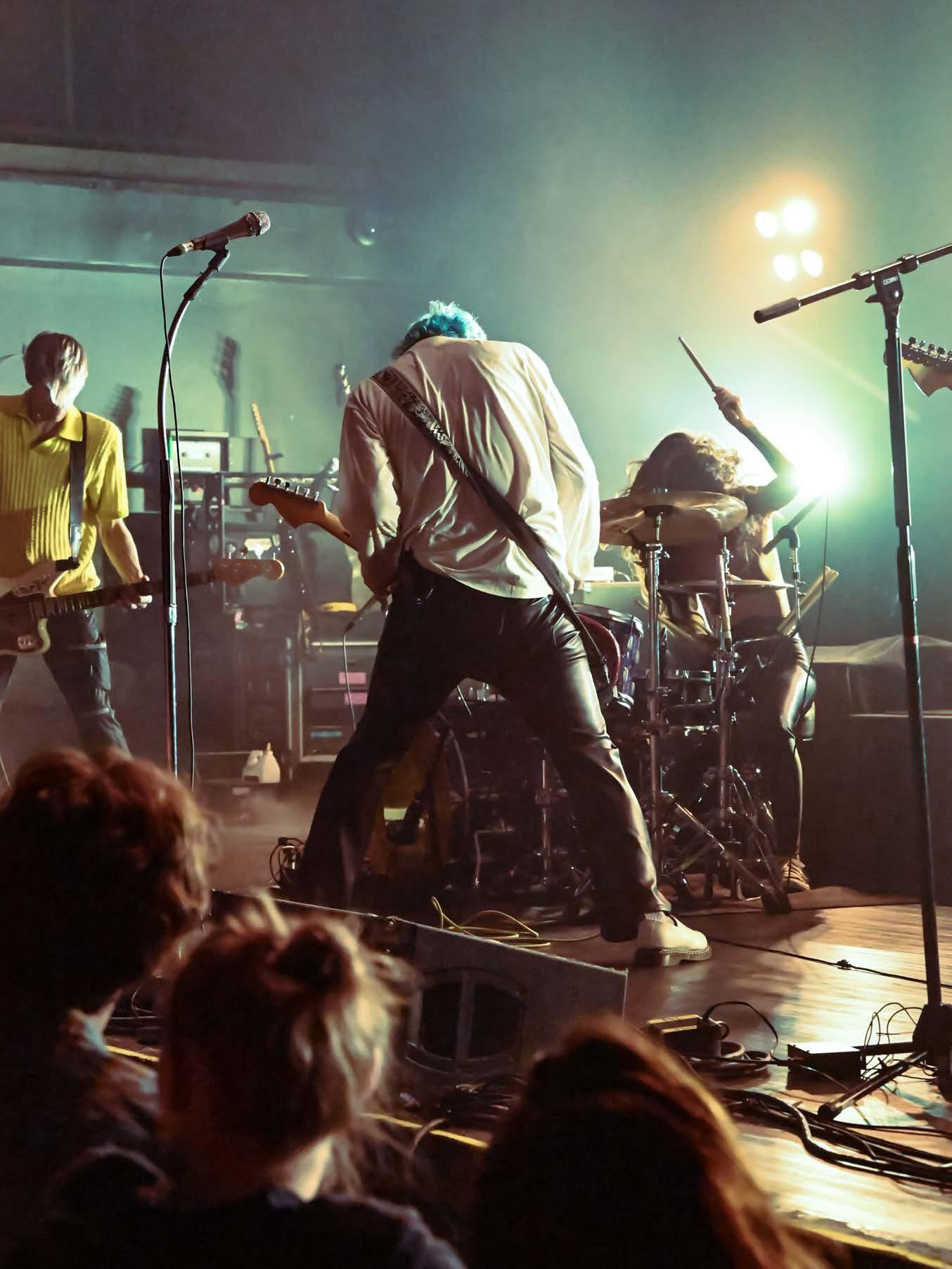 Dreamers, Big Night Live
Photo by Sammie Cirillo (Environmental Science)
Dreamers, Big Night Live
Photo by Sammie Cirillo (Environmental Science)
Album Reviews
Taylor Swift Midnights

Released October 21, 2022
Label Republic Records
Genre Pop
Tasty Tracks “Labyrinth,” “You’re On Your Own, Kid,” “Lavender Haze”
Taylor Swift has undeniably mastered the art of reinvention. With a career spanning over fifteen years and ten albums, her distinct eras have made her a generational icon. Fans were eager to see which direction Swift would turn next, as she has covered everything from country to pop to alternative over the years. However, her 10th studio album, Midnights, serves as an extension of her former work, with each track taking inspiration from a different album within her discography. Swift declared these 13 tracks “a collection of music written in the middle of the night” and “a journey through terrors and sweet dreams,” reflecting these chaotic highs and melancholic lows through themes of self-loathing, revenge, wondering what could have been, and falling in love. The album strays from Swift’s expected rebranding and instead partakes in selfreflection, as its themes and motifs act as a time capsule of the artist’s life.
The album’s strength lies in its cohesiveness. Subdued synth-pop sounds remain consistent throughout the project and cater to the specific ambiance of each individual song. This can largely be accredited to Midnights being the first album entirely recorded with producer Jack Antonoff, who has worked with Swift on numerous tracks before. The sound explores the hues of the night, utilizing reverb, harmonies, and vintage effects to create a moody tone and atmosphere. Throughout the album, Antonoff utilizes the buildup of synths over a song’s progression, which is complementary to Swift’s storytelling style of lyricism. This is tastefully executed on “You’re On Your Own Kid,” where the instrumental builds to a rich sound layered with harmonies and unique electro beats, resulting in a satisfying payoff during the bridge. Even the slower track “Snow On The Beach” follows this pattern, as the synths seem like a heartbeat underneath the airy vocals of Lana Del Rey, building in complexity and fullness as the song progresses.
Midnights carves its own path by straying from current music trends, even giving a nod to Lorde’s nearly decade-old Pure Heroine Swift’s experimental-pop sound is repeatedly
achieved through the use of pitched-down vocals, most notably seen on “Midnight Rain,” “Lavender Haze” and “Labyrinth.” These hazy beats and experimental effects give Midnights an edgy feel, however, the angsty instrumentals at times aren’t backed up by Swift’s softer vocals, coming off as superficial and unnatural. An exaggerated attempt at edginess can be seen on the revenge track “Vigilante Shit,” where her lyrics come off as forced, more comparable to a performance act rather than something grounded.
Swift ultimately abandons the fictional style of lyricism from her two recent albums that felt so whimsical and fresh, returning to her first-person writing style. While this regression makes sense given the concept, there’s a frustrating duality between mature and overly-performative lyrics. This range is best exhibited on “Anti-hero,” which sees complex and insightful lyrics like “I’ll stare directly in the sun but never in the mirror” alongside questionable ones like “Sometimes I feel like everybody is a sexy baby.” Moments like these are confusing and ultimately take the listener out of the song, if only for a moment. Additionally, Swift’s theatrical impulses can be seen on “Vigilante Shit,” with lyrics like “Draw the cat eye, sharp enough
to kill a man,” seeming awkward and forced. “Bejeweled” has the same problem, with a chorus of, “When I walk in the room / I can still make the whole place shimmer.” The dramatic — oftentimes chaotic — lyricism could be Swift’s pursuit of mirroring the emotions of late-night thoughts, or, more realistically, it’s her struggle to write original, meaningful lyrics. Furthermore, with Swift’s switch back to her introspective writing style, most of the themes in Midnights have already been observed and successfully executed in her past work.
Taylor Swift’s Midnights is a cohesive album based on an intriguing concept, but the album strays too far from the maturity of her recent work, ultimately regressing her lyrical sophistication. The album’s faults lie in its inability to present a fresh narrative, offering limited new themes to the audience. Despite this, the concept behind Midnights allows Swift to engage fully in self-reflection, remain vulnerable, and display her insecurities and personal relationships. If nothing else, this album proves that Taylor Swift will continue to carve her own path and career, not adhering to any rules but her own.
10 7 3 9 6 2 8 4 5 1
Ashley Hart (International Affairs and Environmental Studies)
Edible
45
Designer: Megan Lam (Architecture and Design)
Alvvays Blue Rev
Released October 7, 2022
Label Polyvinyl; Transgressive Genre Indie Pop Tasty Tracks “Pharmacist, ““Very Online Guy,” “Pomeranian Spinster”
During the indie and dream pop heyday of the mid-2010s, Alvvays’ self-titled debut received significant praise — its second track, “Archie, Marry Me,” has forever been cemented as an indie pop classic of the era. Their second album, Antisocialites, was similarly well-received upon its 2017 release, continuing the band’s ethereal, reverb-heavy sound and wistful but quirky lyrics. Alvvays was beloved for many reasons: their crafting of bouncy yet melancholic melodies, clever lyrics, and Molly Rankin’s soothing, dreamy vocals. Their latest release, Blue Rev is a natural evolution of their signature sound — Alvvays, but better.
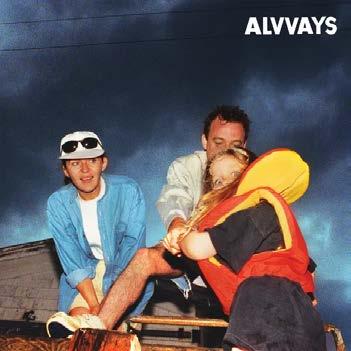
At first listen, Blue Rev is exactly what’s expected. The band holds a certain air of nostalgia for many, and these fond feelings bring high hopes for a new release. The opening track, “Pharmacist,” is an exciting launch back into Alvvays’ world of reverb and lush, full sound which balances a lively
guitar solo with the gloomy lyrical themes of the album: heartbreak, failed relationships, and the struggle to move forward. It’s after the second listen that the album begins to shine. No longer is Blue Rev simply a worthy successor to the previous albums, it’s a mastery of the nostalgic sound explored in Alvvays and Antisocialites. Only the sound is now crisper, the lyrics are rawer, and Molly Rankin’s voice has never sounded better against her warm, full-bodied guitar.
Blue Rev explores relationships that wither away, whether they dissolved years ago or are being dragged on to a quiet death. Most tracks deal with longing and regret, but the album is far from one-note thematically. Each track has incredible range; “Pressed” is full of funny, clever lyrics like “his stride is lengthened by his sense of wonder,” followed immediately by the gut-punch line: “I lost that shine, didn’t I?” “Velveteen” finds the humor in the tragedy, lamenting that “we used to tell each other all the lies / and in a fairly civil way.” The similar themes mean a few tracks get lost in the weeds, however. “Bored in Bristol” and “Many Mirrors,” while good tracks on their own, aren’t particularly memorable to the album as a whole. “Very Online Guy” is one of the freshest and most exciting tracks on the album, using significantly more synths and vocal effects than other tracks. The tech-based effects line up well thematically with the song’s critique of social media culture, but the sudden lyrical shift from failed relationships to Instagram makes the track feel a bit out of place.
It’s difficult to sing about exes and regret for fourteen tracks without getting stale. Blue Rev’s solution is a series of pick-meups scattered throughout the record, some of which are true high points. “Pomeranian Spinster” is the punchy, head-bouncing star of Blue Rev, fighting back against the melancholy and depression of the previous tracks. Rankin confidently asserts herself, proclaiming bluntly, “I’m gonna get what I
want / I don’t care who it hurts.” The track is a desperate rally against hesitance and lethargy. Lyrics like “once shy, twice burned / don’t wanna belong / I’m not nodding along” and “had I just said something, if I wasn’t polite” are a much-needed rebellion and recapturing of autonomy that bring new life to the album.
Blue Rev is the realization of all that Alvvays can be. While the band has maintained its beloved dream pop sound, the album doesn’t rely on nostalgia alone. Blue Rev takes what made Alvvays and Antisocialites special and stretches those traits as far as they can physically go — the melodies are catchier, the lyrics are cleverer, and the emotion is raw and real. It’s an album you can laugh to, cry to, or dance to, brilliantly exceeding its high expectations.
Ev Ogier (English)
10 7 3 9 6 2 8 4 5 1 Fresh Fall 2022 Reviews 46
The Backseat Lovers Waiting to Spill
Released October 28, 2022
Label Capitol Records
Genre Indie Rock
Tasty Tracks “Close Your Eyes,” “Morning in the Aves,” “Snowbank Blues,” “Viciously Lonely”
Less than a year after recording together as a band for the first time, The Backseat Lovers released both a self-produced EP and a full length album. The band’s debut album, When We Were Friends, was met with critical acclaim, gaining praise for its emotional depth, clever lyricism, and unique song structure. For almost three years following the release of their debut album, the group slowed down their output, before finally announcing their sophomore album, Waiting To Spill. This next installment sees the band expand creatively in instrumentation and musical style, while continuing to uphold the quality that fans have come to expect from a Backseat Lovers release. Waiting To Spill also sees lead singer Joshua Harmon’s lyricism becoming increasingly personal and honest as he comes to terms with the conclusion of his adolescence as he learns to deal with his newfound fame.
When We Were Friends dove deep into the moments that preceded the demise of one of Harmon’s relationships and the emotional fallout that occurred after. While Waiting To Spill builds on these ideas, it differentiates itself thematically from its predecessor. Joshua Harmon was only

eighteen years old when many of the tracks off this album were written. After the success of their debut album, Harmon was forced to mature quickly as he was thrust into the spotlight as the band’s frontman. “Close Your Eyes” is an emotional highlight on the LP, masterfully weaving a narrative around Harmon’s fear of growth and leaving his youth behind in lyrics like “time keeps telling me to change / but I’m fragile and afraid.”
Similar to tracks off of their debut, the lyrics are written like a one-sided conversation between Harmon and someone he had been in a relationship with in the past. However, while When We Were Friends tended to focus more on the end of the relationship, Waiting To Spill looks forward. The end of the track delivers both a sonic and emotional climax beginning with “I always knew I’d let you go / had to see you die to grow,” a line illustrating Harmon’s recognition of the necessity of personal development, even if it meant leaving someone or someplace important behind. Strengthened by the loud, melodic guitars and heavy drums, in the final line of the track, “I hope that as you keep collecting scars you never / know my pain” Harmon’s voice radiates with emotion, making for an incredibly powerful conclusion to the song. “Close Your Eyes” serves as the perfect payoff to many of the ideas expressed in songs on their debut album, while introducing the themes of growth and development that are explored in this one.
“Viciously Lonely” is a beautiful conclusion to the album, continuing to display Harmon’s ability to be extremely personal in his lyricism. “But as my youth begins to expire / I’ll slowly put a little less wood on the fire,” Harmon addresses his coming to terms with the end of his childhood and his increased responsibility one last time before stepping back to allow for the drums to pick up and a soft dual guitar solo to lead the listener to the end of the album. “Viciously Lonely” is a quiet and emotional way to end an album, both in the music and lyrics, especially compared to the last track off their previous album, “Sinking Ship,” a more upbeat, loud song. This contrast illustrates to fans that The Backseat Lovers have taken a step towards a more mature, introspective, lyric-centric song-writing style than their debut.
The album also takes a step forward in terms of experimentation in production and song structure. The opening track, “Silhouette,” exemplifies this progression in numerous ways. For one, only thirty seconds of the song’s six minute run time has lyrics — yet the track is able to captivate the listener by creating a “Strawberry Fields Forever”esque crescendoing outro with its use of tape loops, sound effects, pounding drums, and dreamy electric guitar parts. All of this culminates in a final note that is sustained and then transformed into the sound of a car passing by, leading into a soft instrumental guitar part. The chords are played louder and harder, repeating until they are cut off by Harmon’s vocals on the following track, “Close Your Eyes.” Those same chords are later repeated in the climax of “Close Your Eyes” on an electric guitar, creating a sense of familiarity, not only making for a satisfying transition, but also invoking a sense of closure when these chords are played in the climax of “Close Your Eyes.”
“Snowbank Blues” is another example of the band approaching the composition of the tracks on the album in a fresh way. The song’s instrumentation primarily consists of an acoustic guitar, incorporating elements of folk — a genre the band hasn’t drawn from previously. Despite being picked up by a major record label and having a professional producer, the band manages to maintain its homemade feel, as illustrated on this track. Many of the tracks on /Waiting To Spill/ move away from the loud guitars heard on their debut album, incorporating softer melodies and instruments that pair better with the introspective lyrical content, particularly piano.
Waiting To Spill functions as a comingof-age story for The Backseat Lovers, both in terms of the lyrical narrative surrounding Harmon’s coming to terms with insecurities in his age and maturity, and the steps the band has taken to craft a more mature, introspective musical style. Combined with their previous work, Waiting To Spill proves that The Backseat Lovers deserve a place at the forefront of indie rock.
Connor Britson (Business Administration)
10 7 3 9 6 2 8 4 5 1 Fresh
47
Tove Lo Dirt Femme
Released October 14, 2022
Label Pretty Swede Records
Genre Dance Pop
Tasty Tracks “2 Die 4,” “Call On Me,” “Grapefruit,” “Attention Whore”
Tove Lo has always been a master of the alt-pop genre, with each catchy hit bringing a fearless edge. The material on her newest release, Dirt Femme, is no exception. Her first venture as an independent artist, the project is a journey through love and marriage and how to find oneself at the center of it all.

Since her 2017 song “disco tits” exploded onto the mainstream, Tove Lo has been a staple creator of party music. Dirt Femme continues this trend, teeming with dance hits. Released ahead of the album, the single “2 Die 4” brought excitement and buzz for Dirt Femme, an immediate dancefloor staple for this year and a clear hit for TikTok virality. The rest of the album has, without a doubt, lived up to the hype — filled to the brim with both chaos and clarity, both profound reflection on life and the sweet release of a party tune.
“Call On Me,” Tove Lo’s first collaboration with SG Lewis, is what she describes as her “huge euphoric sexy dance anthem,” immediately followed by “Attention Whore,” her “sassy drunk song,” featuring Channel Tres. Something seems so right about Channel Tres being on this album, whose feature amps up the sex appeal and brings this track to the next level. “Pineapple Slice,” a second partnership with SG Lewis, closes out this three-track run of frantic elation and intense lust.
While masterful with an upbeat, exciting tune, other moments on Dirt Femme prove it is much more than a shallow party album. The song “Grapefruit,” a standout on the album, is one that Tove Lo says took her 10 years to write. Many artists are increasingly using music to confront the ever-unattainable body standards of our society. There is a need now to come to terms with and express their own journey of self love, and Tove Lo executes it beautifully. It conveys the vicious cycle of body hatred, wanting to escape your own skin, and the obsessive nature of body dysmorphia, and is Tove Lo’s years–in-the-making look back at “choking on my hands all night in my sleep / counting all the calories” and her path to recovery and regaining control.
She manages to weave moments of realness and deepness throughout the album, each track bringing you closer to her heart. An exceptional single release, the cinematic “No One Dies From Love” begins the album with heartbreak and an expression of what it feels like to lose the person you care the most about. Larger than life, it splits at the seams with deep feeling. “True Romance” is all about raw emotion. Tove Lo’s lead vocal on this track is the only take that was done for this song, ensuring that the feelings were real and in the moment. It’s unusually dramatic and slow for her, but she pulls it off magnificently, crying out about the dangers of truly falling in love with someone and giving all
of yourself to them. “I don’t like the real world,” she croons, “Let’s go back to our world.” The lyrically beautiful “I’m to Blame” is also both introspective and profoundly heartbreaking as Tove Lo expresses the flame of love between two people gradually dying, wondering whether there is hope for the relationship, and if it’s even worth fighting for. It’s more stripped down, with her voice and the lyrics the main focus of this song to enhance her message.
Tove Lo’s ability to weave intense emotions and upbeat pop tracks on this album is masterful, and something that she has been consistently good at in her career so far. From the features, to the lyricism, to the production, Dirt Femme is a beautiful expression of femininity, a thoughtful commentary on love and relationships, and a powerful exploration of self love. that are unfortunately weakened by their contributors.
Lily Elwood (Journalism)
10 7 3 9 6 2 8 4 5 1 Fresh
Fall 2022 Reviews 48
 Alvvays, Roadrunner
Photo by Kimmy Curry (Design)
Alvvays, Roadrunner
Photo by Kimmy Curry (Design)
CROSSWORD (2000s Edition)

ACROSS
1. What was the name of the first solo album by a former NSYNC member?
3. Where did Bring Me the Horizon get their start on the early internet?
7. What Gwen Stefani song is a diss track about Courtney Love?
8. We’re addicted to this Britney Spears song that came out in 2003.
DOWN
2. Which artist signed Justin Bieber?
4. What kind of jeans had the whole club staring at her?
5. What did Pete Wentz play in Fall Out Boy?
6. What famous rapper was in Degrassi?
ZOOMED (Food Edition)
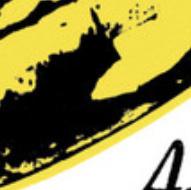


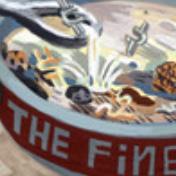

Can

Across: 1. Justified 3. MySpace 7. Hollaback Girl 8. Toxic Down: 2. Usher 4. Apple Bottom 5. Bass 6. Drake
1st Row: The Velvet Underground & Nico The Velvet Underground & Nico Carly Rae Jepsen The Loneliest Time A. G. Cook Apple 2nd Row: Phoenix Bankrupt! Marina and the Diamonds Froot MF DOOM MM...FOOD Fall 2022 Etcetera 50
you tell which six album covers we’ve zoomed in on?
LOCAL PHOTO
SPOTIFY PLAYLIST
We’ve put together some of our favorite (and least favorite) songs inspired by “Boston’s Hardcore Scene and its Legacy.”
Find the playlist on our Spotify page @tastemakersmagazine!

• Hannah Lowicki (Marketing)
FIND MATTY
In Your Face - Slapshot
My Unsaid Everything - Converge Armed With A Mind - Have Heart Feel Like A Man - Negative FX Wolfpack - D.Y.S.
Welcome to Boston - In My Eyes Back On Track - Ten Yard Fight Departed - The Hope Conspiracy Bostons - Have Heart Calling Hours - Bane
Bastards - Defeater Glue - SS Decontrol Walking Tall - F.U.s
We’ve hidden Matty somewhere in this issue. Find him and maybe something cool will happen...

FOLLOW US
Arrivederci’ Motherfucker - Colin of Arabia
Blood and Whisky - Dropkick Murphys
Juggernaut - Cave In
Prone Mortal Form - Only Living Witness What You Deserve - Out Cold
Bullets Over Boston - Embrace Today
Singled Out - Diecast
Like what you read? Check us out online.
tastemakersmag.com
@tastemakersmag
Brittany Howard, Big Night Live
Photo by Faith Nguyen (Architecture)
1. 2. 3. 4. 5. 6. 7. 8. 9. 10. 11. 12. 13. 14. 15. 16. 17. 18. 19. 20.
51













 Flo Milli, Brighton Music Hall
Photo by Taliyah Fox (Game Art and Animation)
Flo Milli, Brighton Music Hall
Photo by Taliyah Fox (Game Art and Animation)
 The Beaches, Brighton Music Hall
Photo by Mukki Gill (Mechanical Engineering and History)
The Beaches, Brighton Music Hall
Photo by Mukki Gill (Mechanical Engineering and History)

















 • Ev Ogier (English)
• Ev Ogier (English)










 • Dakota Castro-Jarrett (Journalism)
• Dakota Castro-Jarrett (Journalism)






 • Hannah Lowicki (Marketing)
• Hannah Lowicki (Marketing)


































 • Sarah Lamodi (English and Media & Screen Studies)
• Sarah Lamodi (English and Media & Screen Studies)

 Old Sea Brigade, Red room
Photo by Lauren Violette (International Business)
Plains, Royale
Photo by Emily Zakrezewsk (Civil Engineering)
Old Sea Brigade, Red room
Photo by Lauren Violette (International Business)
Plains, Royale
Photo by Emily Zakrezewsk (Civil Engineering)
 Ella Jane, Red Room
Photo by Ashley Hart (International Affairs and Environmental Studies)
Ella Jane, Red Room
Photo by Ashley Hart (International Affairs and Environmental Studies)


















 Dreamers, Big Night Live
Photo by Sammie Cirillo (Environmental Science)
Dreamers, Big Night Live
Photo by Sammie Cirillo (Environmental Science)




 Alvvays, Roadrunner
Photo by Kimmy Curry (Design)
Alvvays, Roadrunner
Photo by Kimmy Curry (Design)









